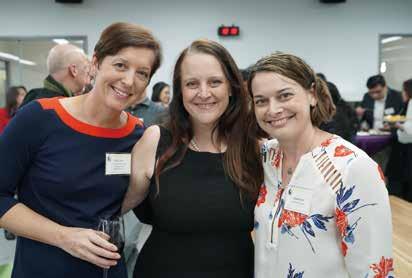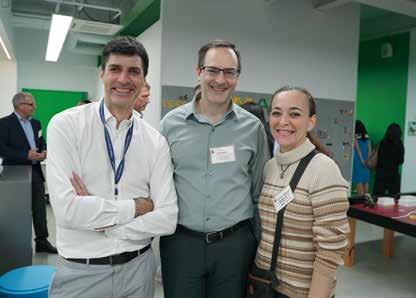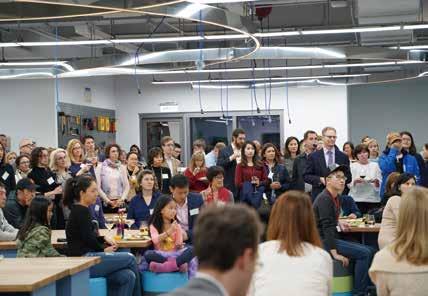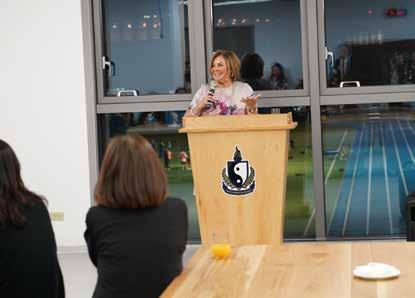TAIPEI
AMERICAN SCHOOL














Taipei American School is an innovative 21st-century learning community. Our mission is to inspire each student to be a confident, creative, caring, and moral individual prepared to adapt and succeed anywhere in a rapidly changing world. We provide an American-based education with a global perspective that results in a love of learning, academic excellence, a balanced life, and service to others.
Taipei American School offers opportunities for students to reach their full potential to become caring, competent, knowledgeable young people who are dedicated to making a positive difference anywhere in the world.
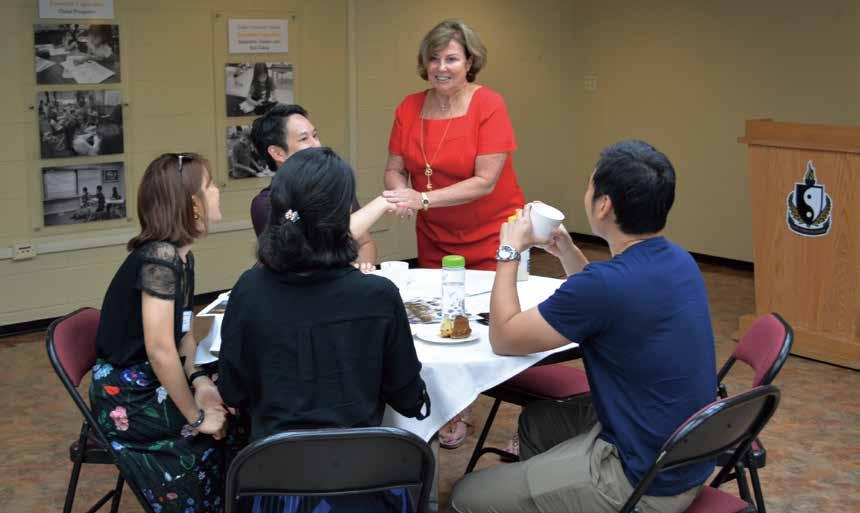
Effective communication is essential to a trusting, informed community. Thus, in a continuing effort to expand authentic communication, Dr. Hennessy joined LINE, a popular messaging service used by our school community. To friend her, please scan the QR code.
Through this channel, the goal is to strengthen communication on matters relevant to the school. Ask questions and share your thoughts, and Dr. Hennessy will do her best to respond. She is the only one who will see your comments, so you can be candid and open. Please make sure to identify yourself in your initial message and adhere to the school values.

Head of School: "Vision 20-20" Achieved Through Continuous Improvement
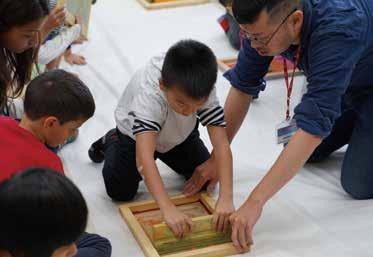
Board of Directors: Behind the Scenes with Your Board of Directors
Annual Giving Program
Wellness in Action: A New SHAPE for the P.E. Curriculum




Lower School Spotlight: TAS's Literacy Journey & Grade 4 Field Trip
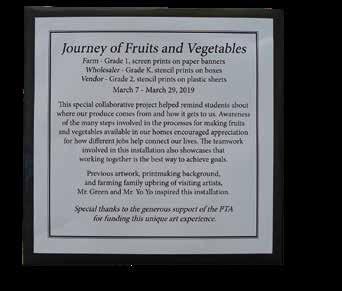


Middle School Spotlight: The Positive Impact of Well-being Initiatives
Upper School Spotlight: Forensics, NOVA, and Character Education
Athletics: IASAS Updates
Spotlight on TAS Drama
Visiting Scholars: Dr. Aaron Kyle, Loung Ung, and Darren Canady
PTA Grants: Finding Balance Through Music, Dance, and Meditation
Professional Development: EARCOS Presenters
Alumni: Anne Noordhoff Lin Reflects on a Family Legacy
Did You Know?
TAS Gala Ball
Art in the Dark
The visiting artist duo known as “Green” worked with the lower school art team and students in Grades K-2 to create “The Journey of Fruits and Vegetables” thanks to a PTA grant. This project exposed our students to screen printing and stencil printmaking techniques while also informing them about where our produce comes from and how it gets to us. The finished print products were on display in the lobby from March 11-29, 2019.
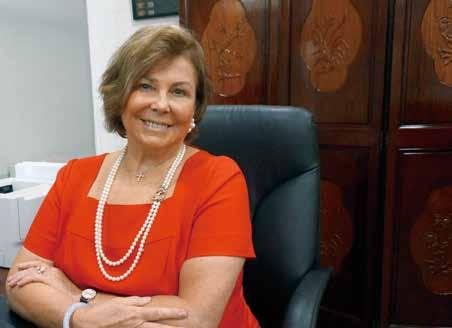
As we prepare to celebrate Taipei American School’s 70th birthday next fall, there seems no better time to stop and reflect on the value of a TAS education. That value has at its foundation a shared resolve that inspired our educational leadership, the school community, the faculty, and the Board. Put simply, the commitment was to bring our unusually academically able students, our uniquely gifted performing and visual artists, our authentically multicultural, multilingual children together so we could infuse within their daily lives a commitment to strong character and ethical behavior and unleash their unlimited potential: academically; athletically; artistically; socially; and as servant leaders. As I have watched over these past thirteen years, I have seen truly inspired teamwork bring the TAS students of today to a place where we can say they are well prepared for success anywhere in this dramatically and rapidly changing world.
The steady upward climb challenged much of the status quo and contradicted the best practices expounded upon by many pundits within the educational world. Slow and steady wins the race, many educators believe. At TAS, we felt our students _ always well taught, always well cared for, always well respected _ were capable of more. Much more. With unusual and unique combinations of strengths and talents within the student body, demanding but highly supportive parents, and a visionary Board, we set about with radical intentionality to build something enduring, something of significant academic and personal value. Our ambitions and aspirations were broad and deep, and addressed nearly every discipline in every division. Standing upon the shoulders of the leaders and educators who made TAS so well
regarded for its first fifty-five years, we set out with determination and optimism to strengthen every element of school life, curricular, co-curricular, athletic, socio-emotional, character, and service related.
This focused commitment and determination has never, nor should it, take the form of selfsatisfaction or of thinking “good enough” ever is. It is in the blood of every TAS Tiger to crave more, higher, better, and to care deeply about the changing world that surrounds them and the one that awaits them. A school is made up of multiple elements: students, teachers, programs, buildings, and the ideas that conceived them. As the saying goes, a “school is a building which has four walls with tomorrow inside.” For the last seventy years, and indeed with radical acceleration and determination over the past nearly fifteen years, TAS has been preparing our students for their tomorrows, whenever or wherever those tomorrows occur. This is what our community demanded, expected, and, once satisfied, supported in a way that was singularly critical to the school we have today. It bears mentioning that just fifteen years ago our accrediting agency, WASC, put us on probation, and challenged the community to come together in support of the excellence for which TAS had long been known. That issue was resolved NOT by slow and steady pacing, but by decisive and bold response. Within months the School was again fully accredited, and commendations from visiting teams over these intervening years have been nothing but complimentary.
What have we seen over this seventh decade of TAS history? Tremendous change, transformation, community involvement, continuity of faculty and administration, higher and higher levels of parent satisfaction, continuously impressive college admissions, expansion of all learning support and counseling areas, programs previously unheard of becoming the norm, all within a school whose waitlists have never been longer, and whose enrollment is at its largest level since derecognition.
Allow me to describe a few of the achievements of the past decade:
● Built a new Upper School featuring advanced science research labs and equipped with cutting edge technology for scientific research and robotics
● Provided a large lecture hall within the Upper School for the many outside scholars in residence and visiting lecturers to speak to large groups of students
● Established the Liu Lim Arts Center as a space for students to explore their passions in visual as well performing arts
● Established the Tiger Health and Wellness Center, a state-of-the-art strength and conditioning center with full time certified trainers and strength and conditioning coaches
● Changed the school governance model to include four appointed members who join the nine elected members, bringing institutional memory and significant skills to our deliberations
● Refurbished the auditorium with our “Please Have a Seat campaign”
● Developed a culture of philanthropy whereby nearly 70% of all parents gave to support excellence last year; this year 100% of faculty, Board, and administrators have donated. The margin of excellence created by the successful fund-raising program, which had participation from less than 1% of the community a decade ago, is the foundation of the radical improvements we have instituted in such a short period of time. We have a grateful, satisfied community to thank for these significant changes.
● Received numerous commendations from our accrediting body, the Western Association of Schools and Colleges (WASC), including a six-year accreditation, the longest endorsement given by WASC
● More than tripled the amount of professional development dollars invested in our esteemed faculty, key to recruiting and retaining the best people
● Addressed the wellness, nutritional, and stress management needs of students through an initial two-day learning event, from which much good has come and many programs have spun off
● Introduced Film Studies, expanded dance, added electives at the Middle School
● Built world class robotics, iGEM, MUN, film, journalism, public speaking, and debate programs with significant funding from fund raising programs
Throughout these exciting years the educational leaders have operated on one principle: “Decide what you stand for and stand for it all the time” (Clayton Christiansen, Harvard Business School guru and celebrated innovation expert). A decade ago I wrote an article about what TAS might look like, naming it “Vision 20-20.” How much we underestimated the capacity of the community! How badly we underestimated the potential of all our students! The fact is that we have achieved all we set out to do in that decade old article. The problem is that we have only just begun. May the next decade sustain the transformation in ways we have not yet even conceived, for students we have not yet even welcomed to the TAS Family.

當我們準備在明年秋天慶祝台北美國學校的 70 週年時,似乎沒有更好的時間點佇足思考 TAS 教育的價值。此價 值的基礎是共同的決心,激發了我們的教育領導力、學校社群、教師和董事會。簡而言之,我們的承諾是將我們 學術能力特別強的學生、我們有獨特天份的表演和視覺藝術家、我們真正多元文化、多語言的孩子聚集在一起, 這樣我們就可以在日常生活中注入對強烈品格和道德行為的承諾,並釋放他們在學術、運動能力、藝術、社交、 作為公僕領袖的無限潛力。正如我在過去十三年裡所看到的那樣,我看到真正激發靈感的團隊合作,將今天的 TAS 學生帶到了一個我們可以說他們已經為在這個瞬息萬變的世界中成功立足做好充分準備的地方。 穩步向上的攀升挑戰了大部分的現狀,並與教育界許多權威人士所闡述的最佳實踐相矛盾。許多教育工作者認 為,緩慢而穩定能贏得比賽。在 TAS,我們覺得本校學生 - 總是受過良好的教育,總是受到良好的照顧,總是受 到尊重
師、課程、校舍和構思它們的想法。俗話說,“學校是一座以四面牆圍著明天的建築。”在過去的七十年裡,在 過去將近十五年的時間裡,TAS 一直在為本校學生做好明天的準備,無論這些明天發生於何時何地。這是我們 社群所要求、期望的,並且一旦得到滿足,就會以對我們今天所擁有的學校至關重要的方式加以支持。值得一提 的是,就在十五年前,我們的認證機構 WASC 把我們置於觀察期,並要求社群共同支持 TAS 早已為人所知的卓 越性。這個問題不是通過緩慢而穩定的節奏來解決的,而是通過果斷與大膽的反應來解決的。在幾個月內,學校 再次獲得了全面的認證,訪問團隊對這些干預年度的表彰一直不停的。
我們在 TAS 歷史的第七個十年看到了什麼?巨大的變化、轉變、社群參與、教師和行政的連續性、更高與更高 的家長滿意度、持續令人印象深刻的大學錄取率,擴大所有學習支持和諮詢領域、以前聞所未聞的課程成為常態, 所有這些都在一個等候入學名單從未更長過的學校內,並且其入學率是自斷交以來最高的。

Within each “The Window” magazine, you find messages from your Board of Directors. They are intended to capture the many and varied responsibilities, indeed obligations, your Board of Directors accepts each year, ones that are publicly accepted in the signing-in service at the October Annual General Meeting. It is often the case that a school community only pays attention to the work of its Board during times of conflict or trouble. Perhaps that is human nature. However, the role of the Board in setting the Strategic Vision for the school, choosing visionary leadership, attending to matters of retention and stability, assuring financial equilibrium, and monitoring progress in all areas of school life should be recognized in times of sustained success and transformation with as much detail as happens in times of trouble. Such is the purpose of this article.
In my current position as Interim Deputy Head of School, I have observed first hand how our Board works. I admit that as a teacher, department chair, and debate coach I rarely thought about the role played by the Board in assuring that our program is the best, that we can recruit from the best of the best teaching and coaching talent, and that our students have enviable financial and administrative support. That said, after a year as the administrative liaison to the Governance Committee of the Board, and having attended myriad meetings and planning sessions, I have seen the way your Board thinks strategically, demands accountability, deliberates all financial decisions, and monitors the present with eyes clearly locked on the future of TAS and what is best for our students of today and tomorrow.
Allow me to offer a few examples, focusing on program accountability, financial accountability, and enrollment planning.
PROGRAM
We have a Strategic Plan, adopted by the Board after taking into account school-wide suggestions and input. Each month the administration then provides a lengthy written report, an executive summary, and an oral report on how each program is progressing. Whether it is Performing Arts, Athletics, EAL, English Language Proficiency, Mandarin, STEAM, or any of the other vital programs of the school, your Board reviews progress, identifies areas where improvements could be made, and recognizes accomplishments from previous reports using data provided by each division. Recognizing that each program is only as strong as the faculty and staff supporting it, the Board also receives constant updates on recruiting and retention matters, and assures that TAS can, indeed, recruit and retain excellence through attention to what most motivates educators: autonomy, excellent colleagues, appropriate class sizes, appropriate student numbers, opportunities for outstanding Professional Development, and compensation and benefits. Over the past decade, the average length of service for all faculty has doubled, and the current Head of School is the longest serving in TAS history. Such accomplishments can only be achieved with a harmonious, involved, demanding group of people who come together to attend to what is best for the students of TAS, and from where I sit it is clear that this Board has done just that.
I was previously not aware of the number of hours this Board spends examining infrastructure needs, risk management, plant fund obligations, endowment growth, fundraising and, of course, the annual operating budget. Quarterly, the Controller reports to the Board on all expenses and any savings that deviate materially from the approved operating budget. As I watched the Upper School being built, saw the Wellness Center added, witnessed the renovation of the Auditorium, the opening of the Black Box Theater, the addition of dance studios, the start of the film program and finally for this moment the dedication of the Solomon Wong Tech Cube, I realized that none of that could have happened without a Board of Directors firmly committed to excellence for all, and doggedly determined to turn aspirations into reality by assuring that the funds are available to do so. The Management and Resources Committee receives an update on fundraising at each meeting, and expectations are high. More than half of the costs of the Solomon Wong Tech Cube were covered by gifts from more than 2,500 community members, and one lead gift started the campaign on the right foot. It is noteworthy that this year, 100% of our faculty, as well as all administrators and Board members, donated to the School. I believe this reflects
I believe this reflects confidence in the leadership the Board has provided, and the direction our School has taken.
This Board expects a report at every Board meeting, from the Head of School, on exactly where we stand in terms of enrollment, student attrition, student retention, wait-lists, and any plans the Administration may have to address issues arising from the data that is presented. The Board discusses demographics, economics, marketing, communications, trends, and limitations. Given our long waitlists at the Lower School, and the fact that we are at the highest enrollment since Taiwan’s formal derecognition, the Board expects to hear from the administration as to how we can better serve our community in this area as well.
respectfully offer this inside view of your Board of Directors in action. I felt well-informed about this place my wife and I have chosen to call our professional home, but I did not realize how critical the Board’s leadership and support really is. Having learned that this year, like a good teacher, I pass it along.
細地進行轉型的角色應被認可。這就是本文的目的。
在我目前擔任臨時副校長的職位上,我親眼目睹了董事會的工作方式。我承認,作為一名教師、系主任和辯論教 練,我很少考慮董事會在確保本校最佳課程方面發揮的作用,我們可以從最優秀的教學和輔導人才中招募,並且 本校學生有令人羨慕的財務和行政支持。也就是說,擔任一年的董事會治理委員會的行政聯絡人,並參加了無數 的會議和規劃議事,我看到了董事會策略思考的方式、要求問責制、審議所有財務決策、與監督現狀,並以眼睛 清楚地鎖定了 TAS 的未來、與對今天和未來學生最利的事物。
請允許我舉幾個例子,著重課程問責制、財務責任制和招生計劃。
我們制定了一項策略計劃,董事會採納了經過考慮到全校的全面建議和意見。每個月,行政主管都會提供冗長的 書面報告、執行摘要和口頭報告、以及口頭說明每個計劃的進展情況。無論是表演藝術、體育、EAL、英語語言 能力、華語、STEAM、還是學校的任何其他重要課程,您的董事會都會審查進度,確定可以進行改進的領域, 並使用每個部門提供的數據來認可過去報告的成就。體認到每個課程只有教職員支持才會強大,董事會還不斷接

Numerous studies have uncovered a proven correlation between play and academic achievement. At TAS, we want to provide every opportunity for our students to excel, and the playground is an important component in their educational journey. The new playground will provide a place for our lower school students to play, learn, and grow into creative and confident adults who make a difference in their communities.
Our goal is to begin construction on the playground in June of 2019, and open it beginning of the 2019-20 school year. To do this, we need the support of the community. Gifts of any amount are appreciated and will help make this a reality for all of our students.
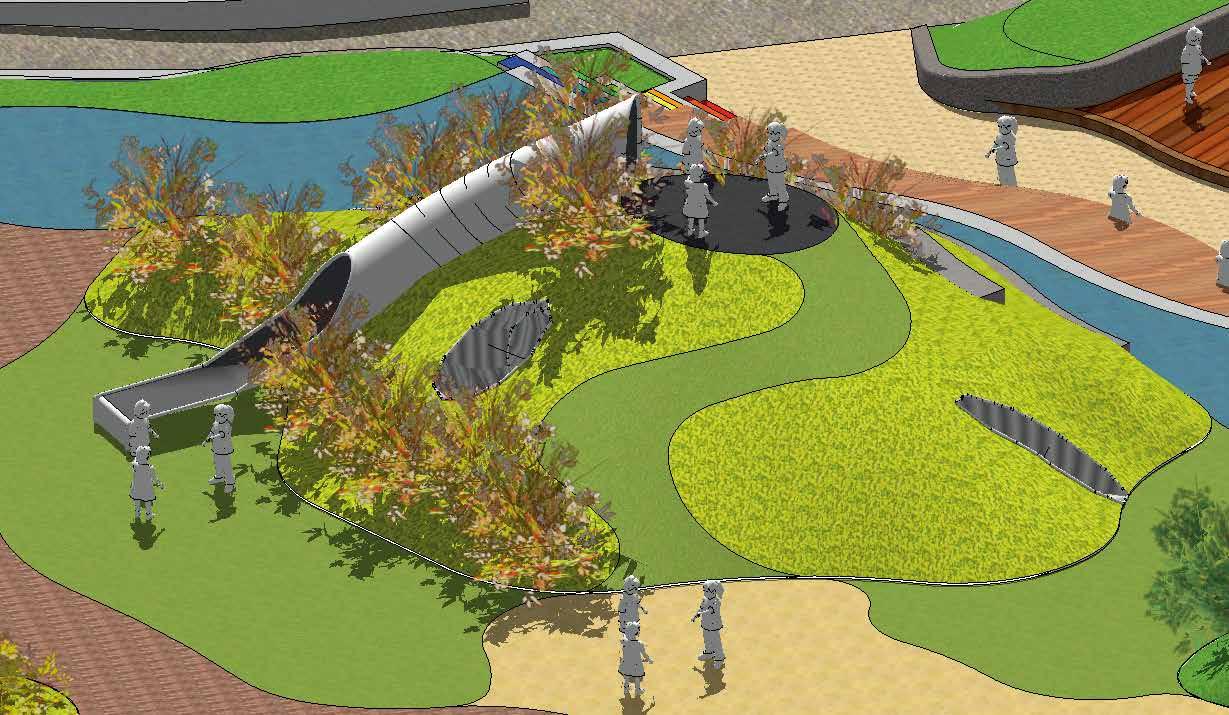
Please contact the Development Office to find out how you can have your name forever associated with the joy of the Lower School playground.





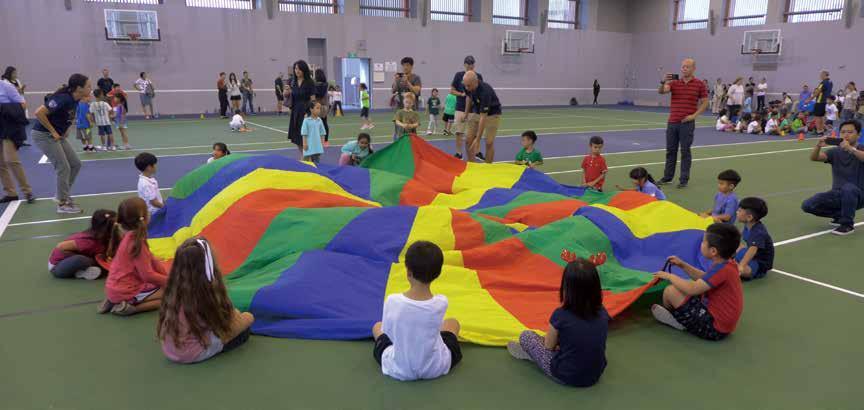
 By Lindsey Kundel, Communications Officer
By Lindsey Kundel, Communications Officer
Since the beginning of this school year, the three physical education departments have been working hard to update and revise the school’s P.E. curriculum, paying particular attention to the alignment and progression of skills between the three divisions. The curriculum was previously revised in 2003 and, while it has remained relevant and sensitive to our students’ needs, under the guidance of the Director of Instruction and Learning, Dr. Nathan Smith, the administration agreed that it was time to update the curriculum again as the School more fully implements “wellness” as part of our newly adopted Essential Capacities.
According to Greg Carter, lower school team leader, the main goals of this curricular update are to “capture what it is we currently do and see where there might be any gaps or redundancies in order to achieve a better aligned KA-12 curriculum facing the wrong way.”
In order to assist in this revision, the school’s administration provided two resources: time and people. The school hired two award-winning international educational consultants, Carolyn and Ted Temertzoglou, to visit, observe, and advise all three divisions on how to update their current curriculum to better reflect the school’s mission and current research into physical education, nutrition, the mindbody balance, and physiology. The Temertzoglous visited for the first time between December 13-20 and will visit again next December to asses the divisions’ progress in implementing the ideas from their first visit. During their visit, the consultants toured the school’s wellness facilities, met with aquatics teachers, observed extracurricular sporting activities, met with divisional leadership, and observed PE classrooms across every grade level. They also assisted in cross-divisional and divisional discussions to form a departmental mission statement, align the K-12 curriculum, and discuss best practices in PE instruction and assessment.
Terry Lagerquist, upper school physical education department head, says that with the Temertzoglous’s help, the “gaps” were both easy to see and address. The three divisions have not radically altered their curriculum or approach to physical wellness; instead, the consultants were able to help the department codify their vision with an official shared philosophy and mission statement. “It’s kind of the umbrella that goes over everything,” Lagerquist said. “It helps to give direction to how we teach and what we want to get out of our students.”
The new mission statement of the physical education department was drafted with input from all members of the physical education department, the visiting consultants, and Dr. Smith:

● Taipei American School’s Health and Physical Education program develops the physical and health literacy of all students by acquiring the knowledge, skills, and confidence to lead healthy, active lives. Our program fosters the physical, mental, emotional, and social development of all students to thrive in a rapidly changing world.
Everything that the teachers plan stems, from this mission, according to Lagerquist. However, the mission statement can be boiled down even more simply. Lagerquist says that the three curricular goals related to this mission are to allow the students access to: 1. Diversified and dynamic movement, 2. Lessons that teach life skills and healthy habits, and 3. Instill a value of being active.
According to Carter, the lower school P.E. team is “well along the way to completing” the tasks set forth by the Temertzoglous, including some which have already been implemented. “Our division is in complete agreement with the direction we need to take to ensure our students receive a quality KA-5 program.” Lagerquist agrees. He says that the department will officially finalize their curricular review process 12 months from this publication date. He says that it’s been “great” to go through this review and alignment process as a department because of the types of questions they get to ask themselves. “What are we asking kids to do? Does it align? Is there a progression? We all need to continue to improve,” Lagerquist said. “We can’t just keep doing the same thing. Needs change, kids change, society changes, and our curriculum needs to change as a result.”
The biggest change to come from the consultants’ visit was to update current TAS standards to meet or exceed U.S. national P.E. standards, as set forth by SHAPE America, the Society of Health and Physical Educators. There are five key standards that the School will formally adopt:
● Standard 1: The physically literate individual demonstrates competency in a variety of motor skills and movement patterns.
● Standard 2: The physically literate individual applies knowledge of concepts, principles, strategies and tactics related to movement and performance.

● Standard 3: The physically literate individual demonstrates the knowledge and skills to achieve and maintain a health-enhancing level of physical activity and fitness.
● Standard 4: The physically literate individual exhibits responsible personal and social behavior that respects self and others.
● Standard 5: The physically literate individual recognizes the value of physical activity for health, enjoyment, challenge, self-expression, and/or social interaction.
The department has also begun to offer some new opportunities within their units as a result of this process. There are three new offerings that Lagerquist is excited to bring to students, some of which have already been implemented in school year 2018-2019. There will be new individualized activities covered within physical education courses including movement, dance, yoga, meditation, and martial arts. In particular, the school has begun
a partnership with Taiwan Brazilian Jiu Jitsu Academy, which is owned by a Taipei American School parent. According to Lagerquist, “the kids really loved it, but it also prepares them for life, how to defend yourself.” He says that this is an important new offering for the school because we previously did not offer martial arts. Second, the school will begin to offer a semester-long elective in yoga and meditation. Lastly, the school will begin to offer an advanced fitness training course in addition to the regular level fitness training course currently offered.
Of equal importance to Dr. Smith was to ensure that the school’s P.E. department embraces and nourishes lifelong health. While many schools use their P.E. curriculum to “train up athletes,” for Dr. Smith, P.E. at TAS is more about “training up people to be active throughout their life,” not just for success in one sport. He says that our curriculum now is about helping students to “know their mind-body connection” and to focus on how one’s physical health can help to balance their mind, all over the course of 12 years.
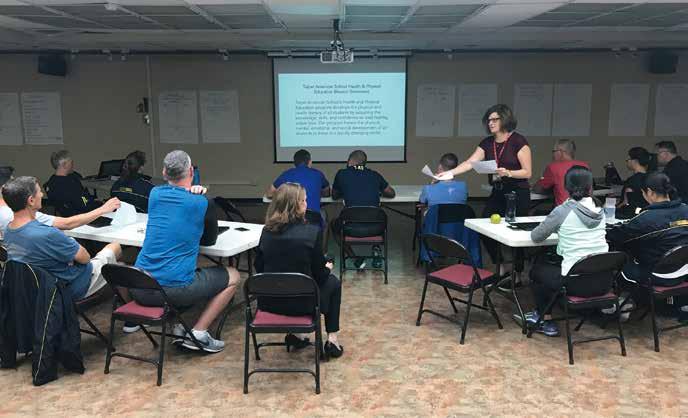
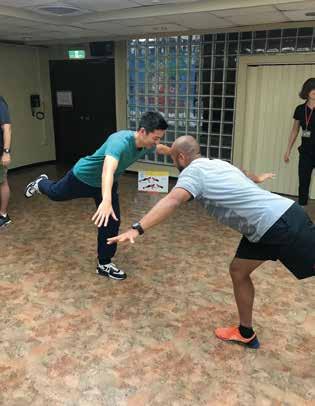

All of these changes will be implemented within the next school year. Physical education is a vital part of the Taipei American School experience because UNESCO research shows that high-quality physical education programs can help students live longer (as much as 5 years or more on average), earn more (as much as 8% more throughout life), learn more (15% more likely to go to college or university), do better (achieve 40% higher test scores), make better choices (less likely to smoke, do drugs, and engage in risky sexual behavior), and move more (10% less likely to be obese). Ultimately, curricular reviews like this help the School ensure that it is providing the highest quality learning and movement experiences, backed by research, to benefit the lifelong wellness of our community
“Healthy body, healthy brain,” said Lagerquist. “If we can reduce our students’ stress levels, reduce their anxiety, and increase their self esteem through new physical programs, we will be able to help them achieve new things.”
● 台北美國學校的健康和體育課程藉獲取知識、技能和信心來培養所有學生的體能和健康素養,從而過著 健康、積極的生活。我們的課程促進所有學生的身體、心理、情感和社交發展,以在瞬息萬變的世界中 茁壯成長。
根據 Lagerquist 的說法,教師計劃的一切都源於此使命。但是,使命宣言可以更簡化。Lagerquist 說,與此使命 相關的三個課程目標是讓學生能夠進入 1. 多元化和動態的運動,2. 教授生活技能與健康習慣的課程,以及 3. 灌 輸積極的價值觀。
根據 Carter 的說法,小學體育團隊正在“完成” Temertzoglous 所制定的任務,包括某些已經實施者。「我們 的部門完全同意我們需要採取的方向,以確保本校學生獲得優質的 KA-5 課程。」 Lagerquist 同意。他說,該部門將在本公佈日期的 12 個月後正式完成課程審查程序。他說,作為一個部門,通 過這種審查和調整過程是“很棒的”,因為問題類型是他們可以自問的。「我們要求孩子做什麼?它是否一致? 是否有進展?我們都需要繼續改進,」
Ted has been a physical education teacher for over 25 years. He is the Vice President of Teacher/Student Success at Thompson Educational Publishing specializing in learning resources for Health and Physical Education. He works with provincial governments, ministries of education, International Schools, school boards and health and physical education teachers, implementing UNESCO’s Quality Physical Education Guidelines for Policy-Makers. Along with his wife Carolyn, he delivers keynote addresses and conducts workshops on physical literacy, health & physical education, and staff wellness, all over the world. In 2017, Ted received the R. Tait McKenzie Award. This award is Physical & Health Education Canada’s most prestigious award, named after the distinguished Canadian physician, sculptor and physical educator, Dr. R. Tait McKenzie. The award epitomizes Dr. Tait McKenzie’s professional ideals, his service to humanity, and his dedication to the advancement of knowledge and understanding of physical and health education, recreation, and dance. Ted is also a certified personal trainer with The Canadian Society for Exercise Physiology.
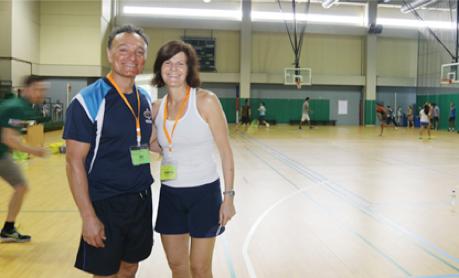
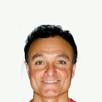
Carolyn Temertzoglou teaches Health and Physical Education in the teacher education program at the Ontario Institute for Studies in Education at the University of Toronto. Through Carolyn’s many years of educational experience as a teacher, department head, curriculum writer, and teacher educator, she helps educational institutions develop quality health and physical education programs. She has an MA in Education from OISE and her research interests include teacher development in Health and Physical Education. Carolyn has been actively involved in writing and reviewing curriculum and curriculum supports for the Ministry of Education and serves on several provincial committees. She is the co-author of several Health & Physical Education resources. Carolyn is the recipient of the 2016 Ontario Physical and Health Education Association Outstanding Contribution Award for her work in supporting pre-service and in-service health and physical education teachers with their practice. Carolyn has presented at the Canadian Physical Health Education conference and internationally in the Caribbean, Europe, Asia, and Africa.
 Ted Temertzoglou
Carolyn Temertzoglou
Ted Temertzoglou
Carolyn Temertzoglou

 By Amanda Jacob, Lower School Literacy Coordinator
By Amanda Jacob, Lower School Literacy Coordinator
Eleven years ago, the Lower School began a journey that has transformed not only the way that we teach reading and writing, but also the way that the children see themselves as readers and writers. For the 2008-2009 school year, the lower school language arts committee and administrators decided to begin teaching writing using a workshop approach because of its strong research base. The workshop structure supports students by providing them with the opportunity to write about topics of their choice, work through the writing process (planning, drafting, and improving), learn specific skills and strategies, and receive individualized instruction. After a year of success with writing workshop, the Lower School realized that they wanted to use the approach for reading as well; all the same supports and structures would help the children become strong readers. As the Lower School traveled along the workshop path, many positive changes happened for the community of readers and writers.
To implement and lead these changes, a new position was created. After teaching grades three and four for many years, Carrie Tenebrini left the classroom to lead the march as the lower school literacy coordinator. She studied what the current program was like, researched where the Lower School wanted to go, looked at assessment data, and made a plan for embarking on the workshop journey. Carrie worked with grade level teams to develop new reading and writing units with articulated skill development and to study the beliefs and research that support the workshop approach. Before adopting the reading and writing workshop, the units in the Lower School were thematic, centered around science, social studies, and literacy topics. Under workshop teaching, time was intentionally devoted to learning the skills of a proficient reader and writer. Across the years, new units were developed that expanded the children’s understanding of different genres. Nonfiction texts have come to play a greater role, and students are introduced to essays, all-about books, how-tos, and persuasive writing in addition to narrative writing.
Adopting a workshop approach also meant adopting new teaching methods. The literacy coordinator was vital in coaching teachers as they learned new instructional strategies. With guidance from the literacy coordinator, teachers studied mini-lessons and learned to focus on one skill each day, demonstrating a strategy for accomplishing the skill and providing the children with independent practice. By keeping the mini-lessons short, teachers provide children with lots of independent work time. During the independent work time, children practice all of the skills and strategies that they have been taught while the teacher works with individuals and small groups, giving each child the support he needs.
As rigorous new reading and writing units have been developed by Teachers College Columbia University’s Reading and Writing Project, the Lower School thoroughly studied and adopted those units, which has led to a streamlined literacy program that spirals up the grade levels, lifting the level of expectations and student work each year. For example, literary analysis begins in Grade 2 when students end the year writing letters to other readers about what kind of people the characters in their books are. In Grade 3, the children write “baby” literary essays, stating a claim about a character and supporting it with moments from the book.
In Grade 4, the children begin writing literary essays about characters and themes. By Grade 5, the children are supporting their claims about the themes in books with specific text evidence and examples of craft moves the author has made (e.g. the use of symbolism or a repeated event or phrase).
As the methods of instruction and units changed, so did the classroom libraries. The Lower School has built rich classroom libraries that feature beautiful and engaging fiction and nonfiction books at a range of reading levels so that each reader can find books of interest and books that support her needs as a learner. Additionally, the Lower School has created a book room that contains multiple copies of books that homeroom, EAL, and student support teachers can use to differentiate instruction for small groups of children. Both the classroom libraries and the book room continue to grow each year because the teachers know that the more a child reads, the more his reading skills improve, and the more he enjoys reading.
None of these changes would have been possible without the incredible professional development that the teachers have been offered each year. The first step on the journey was led and supported by former literacy coordinator Carrie Tenebrini. The current literacy coordinator, Amanda Jacob, was joined this year by a second literacy coordinator, Stacey Johnsen. The role of literacy coordinator is vital to the Lower School’s successful journey. Coordinators work with teams to align units, to study student work, to explore new teaching methods, and to ensure consistency of instruction across a grade level team and from KA to Grade 5. They coach new teachers during their first three years at TAS, ensuring that the highly skilled teachers who have been recently hired know how to meet the unique needs of TAS learners. Along with supporting new teachers, the coordinators work with veteran teachers, helping them refine their teaching craft to best support the learners in their classes. The coordinators’ work is supported by yearly visits from staff developers from Teachers College Columbia University’s Reading and Writing Project. The coordinators plan a week of professional development with the staff developers, focusing on lifting the level of teachers’ instructional moves and ability to individualize instruction for the students. At the end of the week, the coordinators help teams set goals that become the focus of future team meetings, coaching sessions, and PD days.
The addition of a second literacy coordinator this year allows both coordinators to work not only with homeroom teachers but to extend their work with the Mandarin department, EAL teachers, and the teaching assistants who work alongside the homeroom teachers, supporting the children each day. The professional development that all teachers receive ensures consistency and a strong program for all learners. Mandarin teachers are using workshop structures to increase students’ literacy skills and engagement. EAL teachers along with the coordinators have studied and practiced the best ways to support language learners. Teaching assistants have learned to aid children in reading and writing with greater stamina and lifting the level of their conversations about texts.
So many positive changes have happened for both children and teachers on this journey. A rigorous program has been established in which children flourish. Teachers speak about literacy skills and the readers and writers they teach with a common vocabulary. Consistent teaching practices and vocabulary along with the thoughtful alignment of skills and strategies has produced readers and writers with strong skills and a passion for literacy. From kindergarten children who create signs and letters about eating nutritious foods to Grade 5 students who research, write, and argue for reducing the use of plastic, the children have been empowered by this journey to use literacy as a tool for improving the world.



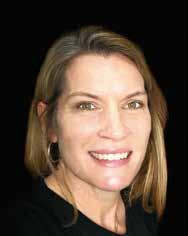

由於哥倫比亞大學師範學院的閱讀和寫作計劃開發了嚴格的新閱讀與寫作單元,小學部徹底研究並採用了這些單 元,以致精簡了識字課程,提升了年級水準,提高了期望程度與學生每年的作品。例如,文學分析從二年級開始, 當學生在年底結束時,向其他讀者寫信,告訴他們書中人物是什麼樣的人。三年級時,孩子們寫下“寶貝”文學 論文,陳述對一個角色的主張,並提供書中的時刻來支持論述。四年級,孩子們開始撰寫有關人物和主題的文學 論文。到了五年級,孩子們支持他們對書中主題的主張,這些主題具有特定的文本證據和作者所做的工藝手法的 例子(例如使用象徵主義或重複的事件或短語)。 隨著教學方法和單元的改變,課堂圖書館也產生變化。小學部建立了豐富的課堂圖書館,其中包含各種閱讀程度 的美麗與引人入勝的小說和非小說類書籍,以便每個讀者都可以找到感興趣的書籍和支持她作為學習者所需的書 籍。此外,小學部建立了一個書房,其中包含多本書籍,母班、EAL 和學生支援教師可以使用這些書籍來區分小 組兒童的教學。教室圖書館和書房每年都在不斷增長,因為老師們知道孩子閱讀得越多,他的閱讀技能就越高, 他就越喜歡閱讀。 如果沒有提供教師每年令人難以置信的專業發展,這些改變都不可能實現。旅程的第一步由識字能力協調員

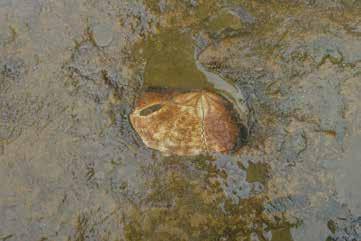
Our students get excited about science time. It is some of the most engaging learning of the day. They learn through hands-on experiences that are not only fun, but also peak their curiosity. In our “Solid Earth” unit, students live the life of geologists. They learn to perform several different tests on unknown minerals to determine properties that will help them to identify various mineral samples like calcite, feldspar, gypsum, pyrite (fool’s gold), and many others. They learn about the rock cycle and explore the ideas of how landforms are created over thousands of years. To get a better understanding of this long and slightly abstract process, they are able to do a simulation using stream tables. Instead of thousands of years, they get to see the land change in about 10 minutes.
When doing simulations in the classroom is exciting, we miss out on the creative side of nature. To see the beauty in our geology unit, we take a trip to Yehliu Geopark. We are so lucky to live near the northern coast where there are some of the most unique examples of rock formations in the world. Yehliu Geopark is famous for hosting the Queen’s Head, but there are plenty of interesting formations all over the 1,700 meter-long cape. Many of the formations have been named by residents and earlier visitors, like the Candle Rocks, the Queen’s Head, the Dragon’s Head, the Ginger Rocks, and a pair of rocks that they call Romeo and Juliet, but the students are able to use their imaginations to describe other formations they see. The most interesting part for many of the students is being able to see the geological processes we discuss in the classroom, in real life. Many of the students could be found showing off their scientific knowledge while pointing out evidence to prove they were seeing sedimentary rocks. They noticed details like the many layers and the presence of fossils. As a teacher, it was rewarding to see how proud they were to share their newly acquired knowledge with our guide and the other parents on the trip. Going to Yehliu brought rocks to life for our fourth graders, and it is another example of the amazing learning opportunities our students get to experience.

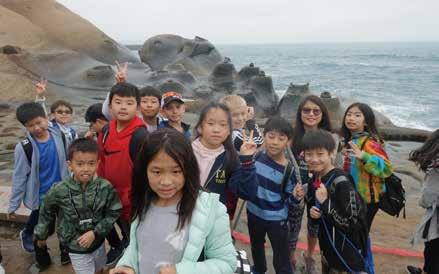
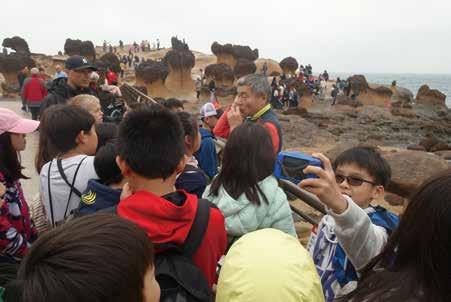




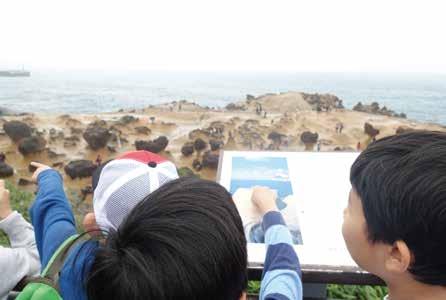
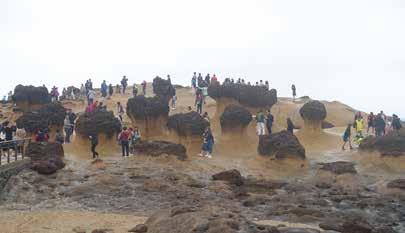

 By Megan Pettigrew, Middle School Counselor
By Megan Pettigrew, Middle School Counselor

It is 7:30 AM and middle school students greet each other in the courtyard and gather near their lockers to chat before heading to homeroom. As small groups meet in classrooms, students and teachers acknowledge each other by name. For the next ten minutes, a wide variety of activities occur to teach and model the skills of well-being. Teachers use the Responsive Classroom meeting structure and techniques to help students listen actively, speak confidently, share feelings and opinions, show empathy, build selfesteem, and foster positive relationships.
Early morning homeroom has been a TAS middle school tradition for the past eight years and it continues to be the foundation of our wellness work. The structure and content of homeroom have morphed over time, but our goal remains steadfast: we must explicitly model and teach well-being. Recent student feedback explains, “Homeroom sets the standard for the day and teaches us to socialize with a diverse group of people we don’t usually talk to. It’s also a safe place to share our feelings.” When the day starts by practicing wellness, our students are better primed for learning and more prepared for the academic, social, and emotional challenges they regularly encounter.
When Aristotle said, “We are what we repeatedly do,” he was addressing the need to be mindful of the habits we form. Our students are not born with an inherent understanding of how to be well, they learn these skills from the people they constantly watch. It is no accident that we start the school year with a full day of wellness-based activities and then confirm our commitment to wellness in September with middle school camp. Our gradual introduction of laptops and structured homework expectations for Grade 6 in quarter one are also a significant testimony to our serious stance on modeling the habits of well-being. Our students experience daily Responsive Classroom activities such as Debate Duos, InsideOutside, and Four Corners to share opinions, practice reasoning, and agree and disagree respectfully. Brain Breaks such as Woosha Warrior and Squirt are games that revitalize tired students managing the expectations of eight different classes and teachers per day. Grades 7 and 8 health classes explore meditation to regain focus in the afternoons. Our students master their demanding schedules with apparent ease, but we know it takes a positive outlook and plenty of focused energy to achieve success. They have core classes every day, four quarterly electives, regular World Language, P.E. and performing arts, as well as frequent study periods to practice prioritizing tasks and time management. At 3:20 PM the extracurricular program begins providing a wide range of sports and clubs for students to explore, find their passions, and continue to build relationships with peers and teachers.
And how do we know these techniques are having a positive impact? Well-being is a difficult entity to measure but there are tangible examples to observe. To begin with, our SWAT teams are thriving. SWAT stands for Student Wellness Action Teams. Students volunteer their lunchtimes to discuss and plan wellness initiatives. Over 60 students across three grade levels take part, and recently the Grade 7 SWAT team chose to organize a community building wellness event for over 200 students with games, challenges, and lots of laughter! We also see students and teachers interacting with powerful connections every day. Classrooms and hallways are alive with positive energy, students self-advocate during classes and study periods, classrooms buzz with learning activity, and students take time to help their peers. Feedback from our new students each semester overflows with comments about remarkably kind peers and caring teachers. Our extracurricular program is also thriving. With a population of 616 students, we have over 300 students currently on sports teams and over 200 in clubs and activities. And, this year, for the first time ever in Mr. Pettigrew’s extensive memory, our students sang their hearts out together while
for their meals to be served at our annual Candlelight Dinner Dance. The feeling of community was magical. Wellness in the Middle School is a serious business – intentional, structured, and multi-faceted, we put significant time and effort into ensuring we create an optimal environment for learning. However, our Grade 6 students recently reminded us that being well is also quite simple, so we will leave you with their advice: “Be happy and share your happiness with others, take good care of yourself and the people and environment around you.”
準備。 當亞里士多德說:「我們重複做什麼,我們就會變成什麼樣的人」時,他講的是我們需要注意自己所形成的習慣。 我們的學生對如何健康幸福的內在理解並非與生俱來,他們從經常注意的人那裡學到這些技能。我們在學年中展 開為期一整天基於健康的活動,然後在 9 月初中露營活動中確認我們對健康的承諾,這絕非偶然的。第一季度我 們逐步為 6 年級推出筆電和結構化家庭作業標準,也是我們對示範健康習慣的認真態度之重要證明。本校學生可 以體驗每日回應課堂的活動,如
個不同的 班級與教師期望的遊戲。7 年級和 8 年級的健康課程探索冥想、重新獲得下午注意力的焦點。我們的學生很容易 掌握他們嚴格的日程安排,但我們知道這需要積極的前景和充足的精力來取得成功。他們每天都有核心課程、四 個季度選修課、常規世界語、體育和表演藝術、以及頻繁的自修課以練習功課和時間管理的優先順序。下午 3:20, 課外活動開始提供各種體育與社團讓學生探索、尋求興趣激情、並繼續和同儕與老師建立關係。


Speech and debate saved my life. I recognize that is a powerful statement to make about something as basic as a co-curricular activity, but it is true – speech and debate helped guide me through the darkest days of my childhood, and I think it provides an important context to the work that we are doing in the Upper School to expand speech and debate opportunities for our students. For the past 15 years, speech and debate has been a significant part of my life – the first three as a competitor, and the past 12 years as a coach. My experience with this activity and the skills that I have learned by both competing in and coaching speech and debate have unlocked doors for me in life that would have never been possible otherwise. It is those experiences and skills that we as a coaching staff hope to share with TAS students as a part of our revamped speech and debate program.
In years past, there have been a variety of opportunities for students to participate in speech and debate at TAS including some trips to the United States, the IASAS Forensics and Debate Cultural Convention, and a handful of tournaments here in Taiwan. While these opportunities are each rewarding in their own right, they were not enough to build a speech and debate program that could be competitive at the highest levels. With that goal in mind, we have built a tournament schedule for speech and debate that will provide TAS students with the competition rounds they need to compete with the best-of-thebest in the United States. This year, that schedule included a two-week trip to the Bay Area to compete at the Stanford Invitational and the Cal Invitational with 16 upper school and 14 middle school students. While the majority of our students competed in Public Forum Debate, we also had 4 students compete in speech events, including Original Oratory, Informative Speaking, Dramatic Interpretation, Impromptu Speaking, and Extemporaneous Speaking. As a competitor myself, I competed in both debate and speech events, and as a program we are committed to ensuring that students who are passionate about speech and debate have the opportunity to do the same. The skills learned in all of these events – speech OR debate – such as critical thinking, research analysis, and connecting with your audience, are skills that our students will use to succeed in the real world long after their graduation from TAS.
In addition to our trip to California, we are also taking a group of students to the Tournament of Champions in Lexington, KY in April and to the NSDA National Tournament in Dallas, TX this June. Next year, our tournament calendar will include additional competition opportunities in New Haven, CT; Ft. Lauderdale, FL; and Minneapolis, MN; in addition to the yearly trips that we will make to the Tournament of Champions and NSDA Nationals. This ambitious schedule is designed to provide students with the opportunity to participate in speech and debate all year long – instead of during just one season. To support our students before and during these tournaments, we are bringing in experts in the speech and debate field to provide additional coaching perspectives. So far this year, our students have worked with Cornelia Fraser, the 2017 NSDA National Champion in public forum debate Carol Green, coach of the 2012 NSDA National Champion in public forum debate; and Ozan Ergungor and Ammar Lone, the public forum team that finished the 2016-2017 season ranked #1 in the United States. Through working with these expert

coaches, our students have received one-on-one instruction that has significantly improved their skills. They have also had the unique opportunity to network with some of the most accomplished members of the speech and debate community and to build relationships that will last far beyond their own debate careers. With this new tournament schedule and access to some of the brightest speech and debate minds in the activity, there is now no doubt: TAS is providing speech and debate opportunities to our students that cannot be found anywhere else in Taiwan.
Our work in expanding speech and debate at TAS doesn’t stop with our tournament schedule – we are also growing our coaching staff. Earlier this spring, we announced that next year Beth Clarke will be joining our TAS community and speech and debate coaching staff. Beth is one of the most accomplished coaches in the United States, having coached numerous national finalists, including the 2012 NSDA National Champion in United States Extemporaneous Speaking. She has also run a very successful program for the past 16 years at Brophy College Prep in Phoenix, AZ. With Beth’s addition, the TAS speech and debate coaching staff is now even stronger and we as a program have the coaching support we need to help take our students to the next level.

One of my core coaching philosophies is that a speech and debate program is more than a team – it is a family. In fact, there is a sign that hangs in my classroom that reads “It’s a Family Thing” to remind me and my students every day that while speech and debate might be a competition and while we might have goals to win a specific round or tournament, the journey we are on together will always be more important than any trophy or medal that we might win. Speech and debate is not an easy activity – it takes many hours of intense research, practicing performances, and re-giving debate rebuttals – but it is certainly a rewarding one. When I moved to Taiwan last summer, I did so with one goal in mind: I wanted to help build the most successful speech and debate program possible and provide as many young people as I could with a skillset that will empower them to change the world. I have only been at TAS for seven months, but I believe we are well on our way to accomplishing both of those goals and many more – and I invite you along to join us on this journey.
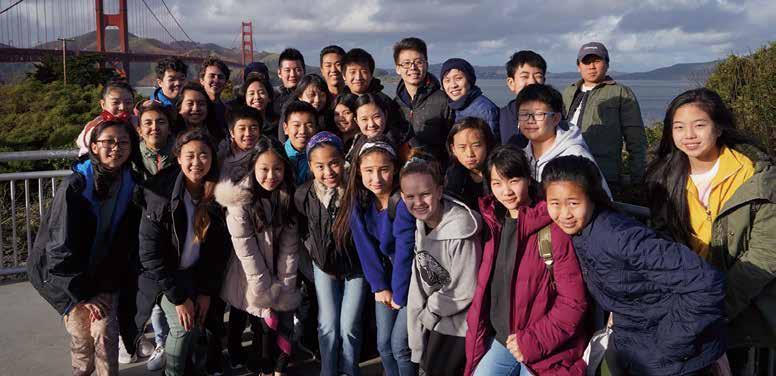

演說和辯論拯救了我的生命。我承認對如聯課般基礎的活動而言,這是個強而有力的聲明,但事實確實如此 - 演 說和辯論幫助指導我渡過童年最黑暗的日子;我認為它為我們在高中所做的工作提供了一個重要的背景,以擴大 我們學生的演講辯論機會。在過去的 15 年裡,演講和辯論一直是我生活中的重要部分 - 前三年,作為競爭選手, 而過去的 12 年則擔任教練。我在這項活動中所獲得的經驗以及我在參與演講和辯論中所學到的技巧,為我在生 活中打開了一扇門,這是我從未有過的。身為教練我們希望與 TAS 學生分享這些經驗和技能,以成為我們改進 演講和辯論課程的一部分。 在過去幾年裡,學生們有很多機會參加 TAS 的演講和辯論,其中包括一些去美國的行程、IASAS 論證和辯論文 化節、以及台灣的一些比賽。雖然這些機會本身都是有益的,但它們還不足以建立一個具有最高層面競爭力的演 講與辯論課程。考慮到這一目標,我們已經為演講和辯論制定了錦標賽的時間表,這將為 TAS 學生提供他們與 美國最頂尖好手競爭所需的競賽輪次。今年,該計劃包括為期兩週的灣區之旅,參加史丹佛邀請賽和
有這些活動中學到的技能 - 演講或辯論 - 例如批判性思維、研究分析以及與觀眾的連結,都將是本校學生從 TAS 畢業後能長久地在現實世界中取得成功的技能。 除了我們的加州之旅,我們還將帶領一群學生參加 4 月在肯塔基州 Lexington 舉行的冠軍錦標賽,以及今年 6 月 在德州達拉斯舉行的 NSDA 全國錦標賽。明年,除了我們將參加全國和 NSDA 錦標賽的年度之旅外,我們的錦 標賽行程還將包括在康州 New Haven、佛羅里達州 Ft. Lauderdale 和明尼蘇達州明尼阿波利斯。這個雄心勃勃 的時間表旨在讓學生有機會全年參與演講和辯論 - 而不僅只在一個季節而已。為了在這些比賽之前和比賽期間能 支援學生,我們引進演講和辯論領域的專家,以提供額外的輔導觀點。今年到目前為止,本校學生與公共論壇辯 論的 2017 年 NSDA 全國冠軍 Cornelia Fraser;公共論壇辯論的 2012 年 NSDA 全國冠軍教練 Carol Green;以 及公共論壇團隊 Ozan Ergungor 和 Ammar Lone 一起合作。公共論壇隊於 2016-2017 賽季在美國排名第一。通 過與這些專家教練合作,我們的學生獲得了一對一的指導,顯著提高了他們的技能。他們還有獨特的機會與演講 和辯論界某些最有成就的成員建立聯繫,並建立遠超出他們自己的辯論職業生涯的長久關係。通過這個新的比賽 時間表並參與活動中一些最聰明的演講和辯論思考,現在毫無疑問:TAS 為我們的學生提供在台灣其他任何地 方都找不到的演講和辯論機會。 我們在 TAS 擴展演講和辯論的工作,並未停留在錦標賽時間表上 - 我們也在培養我們的教練組。今年早春,我 們宣布,明年,Beth Clarke 將加入 TAS 社群以及演講與辯論教練組。Beth 是美國最有成就的教練之一,曾執 教過許多全國決賽選手,包括 2012 年 NSDA 在美國舉行的即興演講競賽。過去
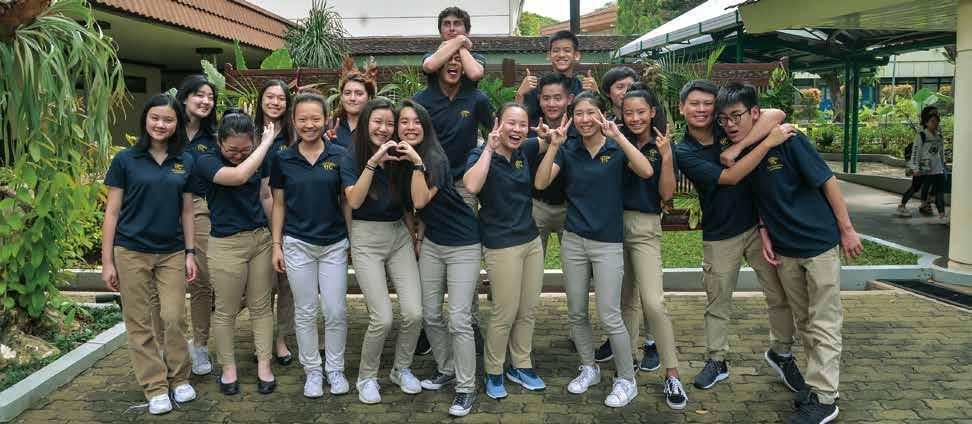
 By Tiffany L. ('20), NOVA Student Leader
By Tiffany L. ('20), NOVA Student Leader
NOVA is an annual student-created, student-run entrepreneurial challenge event sponsored by Taipei American School that provides students with the skills and opportunities to design and launch their very own solution whether that is a product, business, or beyond. Teams of 3 - 5 students compete over a three-day period to brainstorm and prototype innovative solutions to 21st-century issues, while receiving expert guidance from alumni, faculty, or other fellow entrepreneurs on how to improve their projects.
Few people know that NOVA was the brainchild of a group of motivated seniors in Mr. Ives’ Honors Social Entrepreneurship and Innovation class in 2015. For one of their class projects, the students decided their mission was to create more opportunities for students to develop ideas to improve the world and have the resources and support to bring those ideas to life, a desire that is not uncommon among youth today. With NOVA and the growing TAS offerings in social entrepreneurship, social innovation, and entrepreneurship, our students have more wonderful opportunities to build something they feel proud of, something bigger than themselves.
Students from the American School in Japan, Pacific American School, Asia American International Academy, Pacific American School, and Taipei European School also attended the event. A grand total of 26 teams competed for the first place prize: an internship at the Taiwanese company FutureWard. FutureWard aids freelance workers and young entrepreneurs toward building new companies and organizations by enhancing their customer relationships with central and international coworkers.
This year, students were expected to base their projects on the open-ended theme, “Live a Healthier Life.” The solutions created were impressive. One of the finalists, Kingsman Co. produced Medyminder, a medical reminder app that provides patients with medical assistance. The app allows family members to use a “poke” feature to remind and support the person in use. “Here’s how the app works. Let’s say a person has eczema and one day the humidity is particularly bad. The app would remind the user to put on lotion or cream before they leave the house,” Kingsman Co. member Douglas L. (‘21) said.
The winning idea was Flav2O by team Vigil, an innovative solution to encourage higher water consumption. “Flav2O is an innovative water bottle that uses smell to make drinking water more enjoyable. Smell is one of the main senses when identifying flavors. Similar to taste, the stimulated cells will send signals to the brain, initiating a neural response. Even though you may think you are relaxing on the beach with iced tea, don’t let the the refreshing aroma fool you, you are actually drinking pure H2O.” Flav2O member Ryan K. (‘19) stated it best, “We worked hard and were rewarded.”
But the true winners of NOVA were all of the students who participated this year. Through the process of identifying a real problem or opportunity, developing a prototype for a solution, and creating a persuasive pitch, each student had a unique opportunity to learn and develop essential real-world problem solving skills, growth mindset and grit, effective strategies for innovating and creating lasting change, and professional networks.

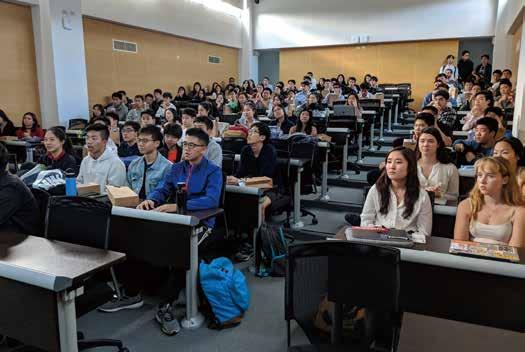

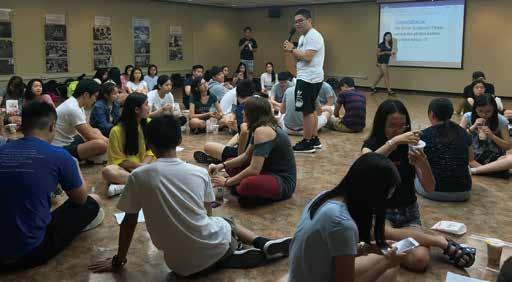

 By Dr. Daniel Long, Upper School Dean of Students
By Dr. Daniel Long, Upper School Dean of Students
Transitions are nothing new for students who are educated in an international school environment. Families come and go, whether due to changes, in work contracts, diplomatic moves, a return “home” to help with family matters, or relocations for additional educational opportunity. If anything, global mobility is increasing in this fastpaced world and this mobility is inevitably accompanied by transition. Addressing student and family transition is an important consideration for international schools.
At TAS, many of our families and students also undergo transition each year. Now, at first glance one may (correctly) assume that our population is actually rather stable compared to many international schools. TAS has a larger group of families that “stay put” for many years.
Each year we celebrate those who have been in the system since Grade 1; this year there are 52 of these “Tiger Babies” in our graduating class. The data in the Upper School indicates that nearly 50% of our students are at TAS for more than five years, a situation that is definitely not normative for most international schools. This stability, however, can be deceiving. In reality, transitions for our students are taking place constantly.
Approximately 250 students transition out of the TAS Upper School each year, the majority of those as graduating seniors. When students graduate, they face some significant changes; most change countries, enter a culture that may not feel like “home” for them, and begin a new phase of life with different expectations and challenges. Those who leave before graduating also encounter changes; they enter a new school, are faced with making new friends, and may experience a gap in learning due to a new academic environment.
Meanwhile, a new group of “arrivers”… well … arrive. We have 350+ new students arrive at TAS each year, from KA to Grade 12. Each of these students is adjusting to a new school, new friends, a new academic environment, and new expectations. Transition also takes place divisionally: 200 Grade 5 students enter the new environment of the Middle School, and 200 Grade 8 students likewise make the transition to the Upper School.
In the midst of these obvious transitions, the leavers and the arrivers have an impact on a group of students who are often overlooked in the transition discussion _ the students who are staying. These “stayers” also undergo transition. Their friendship groups change, the sadness of saying goodbye to the “leavers” is felt very deeply, and some may wish to be making a change themselves rather than the feeling of being left behind. The need to welcome others into their group or to say appropriate goodbyes is as important as being welcomed or being “fare-welled.” Moving is stressful; research indicates that being moved away from seems to be equally stressful. Addressing the needs of stayers is an equally important focus for schools like TAS.
According to counselor Doug Ota, author of “Safe Passages Across Networks,” frequent transitions for “stayers,” “leavers” and “arrivers” create stress. And this stress impacts student learning. Ota, pointing to a meta-study by John Hattie which highlights the potential negative impact that mobility has on student learning states, “while mobility can be one of the richest sources of learning and personal growth, these benefits only occur when mobility’s massive challenges are managed well.”

Parents, counselors, teachers and administrators all have a part to play in helping students undergo transition in a positive way. Mr. Ota recently led a workshop at TAS, attended by forty counselors, teachers, and administrators who are focused on meeting the needs of students and motivated to address transitions. We celebrated some of the great things that are happening; a robust and welcoming Admissions office, new-student orientation, BigBuddy/Reach Out programs at each divisional level, PTA’s New Families BBQ, Senior transition week, and the PTA and Counselor Coffees that address transition and stress. Areas were identified where further improvement is needed: adjustments to existing programs; providing vocabulary to arrivers, leavers, and stayers to help them converse about their experiences; finding opportunities to have these conversations, and addressing gaps in the follow-up with students undergoing transition or preparing for transition.



In advisory at the upper school level, students have begun the process of reflecting on the impact of transition on their perspective as an arriver, stayer and leaver. College counseling will continue to explore this topic in the college process. Parents are encouraged to start this conversation at home as well. By taking a comprehensive approach and working together as a community, the transition needs of our students can be addressed in ways that lead to healthy, positive adjustment.



主持了一個研討會,有
Ota 先生
名輔導老師、教師和行政主管參加,他們專注於滿足學生的需求,並有動
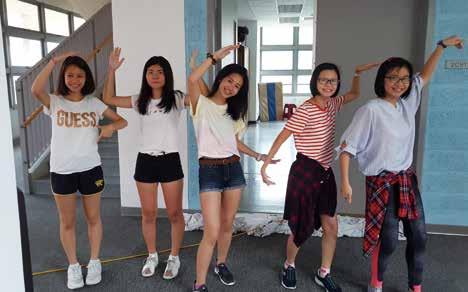
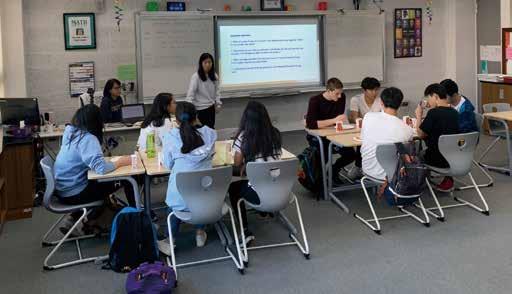

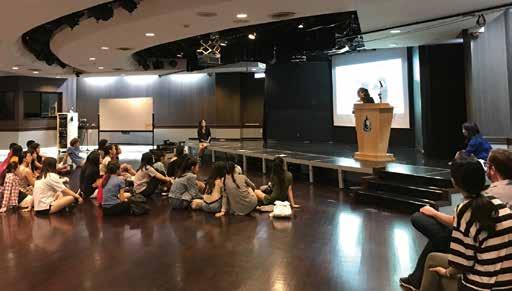
2 IASAS Championships: Five teams medal; all eight teams finish fourth or better for the first time in school history
TAS sports teams put forth an extraordinary collective effort at IASAS championship events, earning five Season 2 medals for the first time since 2010. The varsity boys swimming team led the way by bringing home its second consecutive IASAS title on the strength of a number of record-smashing performances in Manila. The varsity girls basketball team cruised to the championship game but were forced to settle for a silver medal after losing a heartbreaker to the tournament host, Singapore American School.
The varsity boys basketball team overcame injury to bring its fourth straight bronze medal back from Singapore. The varsity girls tennis team’s bronze in Bangkok was its first medal since 2013 and the varsity rugby team came away from Kuala Lumpur with its third bronze in four years.


The varsity boys tennis team, the varsity touch team and the varsity girls swimming team ended up in fourth place in their respective tournaments January 31-February 2, marking the first time in school history that all eight Season 2 teams were able to place fourth or better. Additionally, varsity boys tennis student-athletes William C. (‘21) and Alex L. (‘21) were honored with the coveted Spirit of IASAS award for their exemplary interaction with their host family’s Grade 8 son.
Propelling the varsity boys swimming team’s repeat title were Jason L. (‘21)’s IASAS-record 100m breaststroke time and a TAS-record 400m medley relay performance from Ethan D. (‘21), Jason L., Daolong Y. (‘21), and Hironori K. (‘21) that netted TAS the silver medal. Hironori K. (50m butterfly), Justin W. (‘19; 400m individual medley), Jason L. (100m breaststroke, 200m breaststroke, and 100m butterfly), and the all-senior 400m freestyle relay team of David W., Ethan W., Jason W., and Justin W. all took home gold medals for the Tigers in their respective events.
The varsity girls basketball team was excruciatingly close to a third consecutive IASAS gold medal before falling 49-47 to SAS. Despite numerous key players encountering foul trouble the Tigers led 45-34 with under two minutes to play. An Eagles offensive rebound and putback with seven seconds remaining was the difference as SAS prevailed and the Tigers and all-tournament honorees Cheyenne H. (‘19) and Sabrina C. (‘21) returned home with a silver medal for their valiant efforts.
TAS athletes represented their community with grace in both victory and adverse circumstances during their historic Season 2 efforts. Thank you for your continued support of our Tigers—onward to Season 3!
Head athletic trainer Amber Hardy provided student-athletes and parents with information on best practices for injury prevention. With the assistance of rehabilitation specialist Jerry Chen, Ms. Hardy outlined the necessity of warmup and cooldown, the benefits of strength training, tips for injury treatment and recovery during her parent tea event on Jan. 16 and her assembly for all middle school and upper school students on February 11. Ms. Hardy has also—in cooperation with the upper school administration—implemented a concussion testing program for all of our studentathletes. Visit the Sports Medicine page of the TAS Athletics website for more information on the department’s initiatives.
There has been strong participation through the first two seasons of our revamped middle school sports program. In Season 1, 283 student-athletes participated in Grades 7 & 8 boys and girls cross country, golf, and volleyball in addition to Grade 6 boys and girls badminton, cross country, golf, and tennis. Season 2 saw 260 student-athletes participate in Grades 7 & 8 boys basketball, girls touch, and boys and girls swimming as well as Grade 6 boys rugby, girls touch and boys and girls swimming.
There were 241 registrants for our Season 3 offerings: Grades 7 & 8 girls basketball and boys and girls badminton, tennis, and track and field in addition to Grade 6 boys and girls basketball and track and field. Grades 7 & 8 baseball, softball, and boys and girls soccer as well as Grade 6 softball, boys and girls soccer, and boys and girls volleyball are on offer in Season 4.

TAS 校隊在 IASAS 錦標賽中,自 2010 年以來首次在第二賽季贏得五枚獎牌,這是一項非凡的集體努力。男子 游泳校隊憑藉多項紀錄,在馬尼拉連續第二次獲得 IASAS 冠軍頭銜。女子籃球隊順利進入冠軍賽,但不幸落敗 於地主隊的新加坡美國學校,而屈居第二名。 男子籃球校隊克服了傷病,從新加坡帶回其第四枚銅牌。女子網球隊在曼谷贏得的銅牌,是 2013 年以來的第一 枚獎牌,橄欖球隊則帶著四年內第三枚銅牌離開吉隆坡。 男子網球隊,觸碰式橄欖球隊和女子游泳隊在 1 月 31 日至 2 月 2 日各自的比賽中均獲排名第四,八支隊伍在第 2
SAS 佔據優勢,而老虎隊和錦 標賽獲獎者 Cheyenne H.('19)和 Sabrina C.('21)的英勇努力以一枚銀牌回歸。 TAS 運動員們於歷史性第







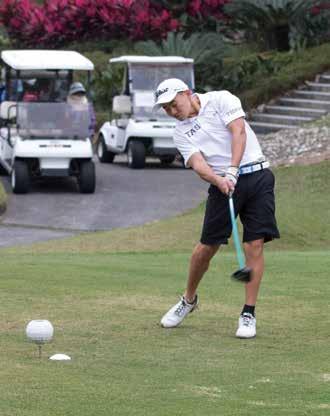


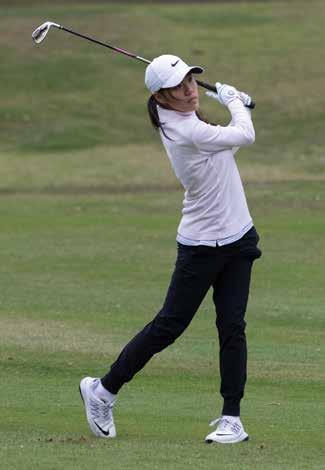

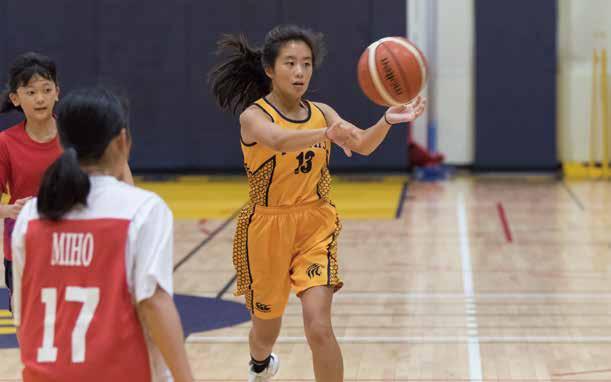

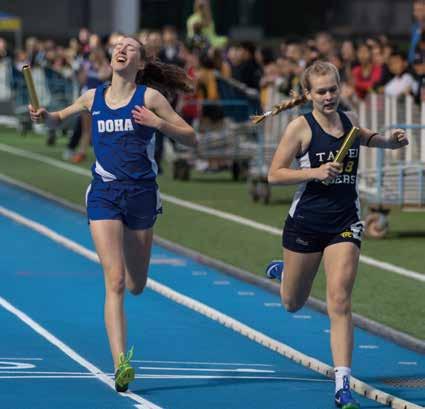


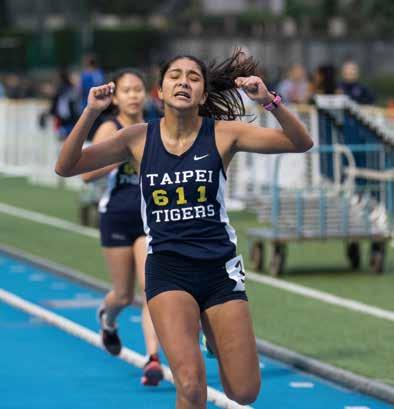


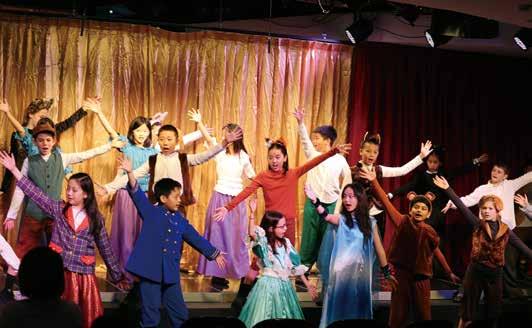
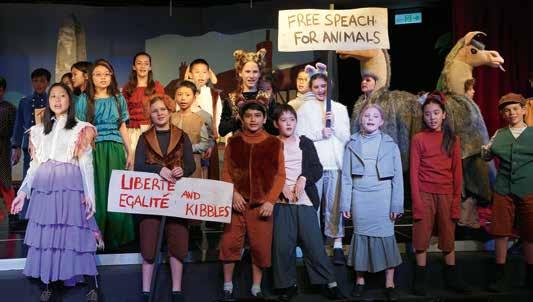 By Julie Kozak, Lower School Musical Director, and Lindsey Kundel, Communications Officer
By Julie Kozak, Lower School Musical Director, and Lindsey Kundel, Communications Officer
The drama program at TAS begins in the Lower School with the Grade 5 musical. This voluntary production, only open to Grade 5 students, starts in November with auditions, continues with rehearsals three times a week in November through March or April and concludes with four sold-out performances in early April. The goal of the Grade 5 musical is to build confidence in students by guiding them through their first drama production successfully while highlighting the TAS values of Honesty, Respect, Responsibility, Kindness, and Courage.
Between 60-75 students typically take part in this annual production. Grade 5 students not only take part onstage in the musical, but they are also active backstage in technical roles including director’s assistant, stagehands, spotlights, costume crew, and ticketing/programs. Students also take part in the accompanying orchestra under the guidance and direction of the Musical Director, Ms. Narelle GillieMorgan. Past productions include “Magic Treehouse: Knight at Dawn KIDS” (2017) and “Seussical KIDS” (2018), with “Dr. Dolittle, JR” as the 2019 production. Sixty-eight students will participate in this year’s production of “Dr. Dolittle, JR” which will debut in the Harmony Theatre. “Dr. Dolittle, JR” is a musical that tells the classic tale of a wacky, but kind, doctor who can talk to animals, taking the audience on a journey from the small English village of Puddleby-on-the-Marsh to the far corners of the world.

Director and Grade 5 teacher, Ms. Julie Kozak, chooses shows based on two main criteria. First, and most importantly, all shows must have a positive message that reinforces the school values. In particular, she thinks that drama productions should really help instill responsibility and courage. Secondly, it is important to her that no student is cut after the audition process because this is the main entry point into the TAS theatre program. She hopes that all participating students can develop a love of drama that will carry on with them as they advance through the TAS drama program in both Middle School and Upper School. “I want them to perform and to enjoy themselves,” Kozak says.
One of the most surprising things to Kozak is how her Grade 5 students change over the course of the production time. According to Kozak, “Surprising things come out once they get on stage. Their personalities really come out and shine. It’s not unusual for homeroom teachers to come to me afterwards and say that they didn’t know one student could be so loud or another student could sing so well.”
Kozak says that she originally got involved with theatre in high school because she, too, was a shy student who wanted to come out of her shell. Her favorite part of directing here at TAS is watching shy students like her evolve and find freedom expressing themselves on stage, as she was able to in her own school days.
Morgan 女士的指導與規範下參加隨行的管弦樂隊。過去的作品 包括 Magic Treehouse: Knight at Dawn KIDS (2017) 及 Seussical KIDS (2018),Dr. Dolittle JR 是 2019 年的作品。六十八名學生將 參加今年的 Dr. Dolittle JR 的製作,該劇將於今年春天在 Harmony 劇院首次亮相。Dr. Dolittle JR 是一部音樂劇,講述一個古怪但善 良的醫生的經典故事,他可以與動物交談,並帶領觀眾從英國小村 莊 Puddle-by-the-Marsh 到遙遠方的世界一角之旅程。
導演和五年級老師 Julie Kozak 女士根據兩個主要標準選擇節目。 首先,最重要的是,所有節目必須有積極的信息,以加強學校的價 值觀。特別是,她認為戲劇作品應該真正有助於灌輸責任和勇氣。 其次,對她來說重要的是,在試鏡過程之後沒有學生被削減,因為
這是進入 TAS 劇院課程的主要切入點。她希望所有參與的學生都 能發展出對戲劇的熱愛,隨著他們在 TAS 初中和高中的戲劇課程 不斷前進。「我希望他們表演與享受,」Kozak 說。
Kozak 最令人驚訝的事情之一,就是她的五年級學生在整個製作過 程中的變化。根據 Kozak 的說法:「一旦他們上台,就會出現令人 驚訝的事情。他們的性格真的顯現並發光。班導師們事後來找我, 並說他們不知道一個學生會聲量這麼大或另一個學生會唱得這麼 好。」
Kozak 說,她最初是在高中時參與戲劇,因為她也是一個害羞的學 生,想要脫離她的外殼。在 TAS 導演時最喜歡的部分是觀察害羞 的學生,比如她的進化,以及在舞台上找到表達自己的自由,如同 當初她在學校時代所能做的。

 By Georgina Christou, Middle School Performing Arts Teacher
By Georgina Christou, Middle School Performing Arts Teacher
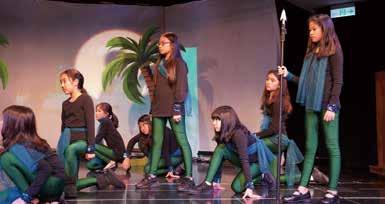
Theater in the Middle School has gone from strength to strength. The curriculum written and delivered by Ms. Georgina Christou reflects a broad offering from the study of Charlie Chaplin’s silent movies in Grade 6, to 17th Century “Commedia Dell’arte” in Grade 7 to analyzing and delivering of Hamlet’s “To be or Not to be” speech in Grade 8. When walking into a middle school drama classroom you will find students highly focused, communicative, and task driven. Why? Because the subject demands it. It takes a good level of discipline and communication skills for a middle school student to navigate the curriculum successfully. No matter where a student begins in their training, Ms. Christou believes that every student has the potential to succeed and that students thrive under the structure, high expectations, and content of the curriculum. Everything delivered in the drama classroom is highly intentional because to train actors one must be a disciplined student.
Each year the middle school curriculum has been complimented by a visiting guest artist who holds a different specialty. This past October, Roxanne Browne from the UK joined the middle school classes to lead workshops on the “Art of Laughter: to be funny one must laugh at oneself.” In the 2017-2018 academic year, the School invited the inspirational Julie Pasqual from New York. Demonstrating how theatre can be used for therapeutic purposes, Ms. Pasqual facilitated workshops on the art of clowning and shared stories regarding her employment as a hospital clown in NYC.
The annual middle school musical continues to draw a large number of participants and audience members each year. This academic year the production team will produce “Shrek,” a musical which is based on the 2001 DreamWorks movie. Auditions are held in January every year. The middle school drama program has a strict no-cut policy, which is a strong guiding philosophy of instruction. As with all past productions, over 100+ students are involved in the success of the production in various roles from actor, musician, make-up crew, lighting, sound, or backstage. The culture of community that has been established over the years is really quite special and something that cannot be replicated in any other facet other than by being part of a theatre production.
A play performance club was added to the middle school program last year and already the number of participants has almost doubled from one year to the next. Last year students performed “Hoodie” by Lindsay Price and most recently “The Audition” by Don Zolidis. The participants of this production meet once a week for intense rehearsals culminating in a 30-45-minute performance in the Harmony Theater each November. This ensemble piece of theater holds all actors highly accountable as they remain on stage for the duration of the play, often physically close to the audience creating a powerful, collaborative, and intimate piece of theatre. Again, this opportunity is open to all middle schoolers and has a no-cut policy.
One of the highlights for this academic year is the upcoming ISTA festival. The International Schools Theater Association has been an important part of the middle school theater program for many years. Three years ago, TAS hosted their first festival and due to its success, they are hosting once again in March 2019. The 2019 festival, which sold out in just over 24 hours, welcomed five international schools (Shanghai American School, Singapore American School, Australian International School-Singapore, Hong Kong International School, King George V School-Hong Kong), 11 visiting teachers, 11 artists from around the world, and over 130 student participants. This three-day festival was guided by our festival titled “Courage and Conviction” and explored what motivates us to do what we do, examining the relationship between courage, conviction and leadership. The festival ended with a sharing performance on Wednesday, March 13 in the Guy Lott, Jr. Auditorium.


 By Cory Edwards and Kari Jensen, Upper School Performing Arts Teachers
By Cory Edwards and Kari Jensen, Upper School Performing Arts Teachers


The K-12 theater curriculum is comprehensive and only deepens and expands at the upper school level. Ensemble and collaboration, voice, movement, improvisation, acting skills, directing, devising, play writing, tech theater, and history of theater continue to cascade and layer our student theater makers with each course level. The theater arts course is perfect for the beginner, followed by honors theater 1, 2, and 3, which empower and provide skills for the more serious theater students. Our extra-curricular theater program is an extension of our robust theater curriculum as it demonstrates, in a practical way, the skills and theories developed in the theater courses.
The upper school performing arts faculty recently welcomed Kari Jensen into the drama department as a full-time theater instructor/director. Kari brought her expertise in musical theater and took the creative lead for the extra-curricular fall musical, “Little Shop of Horrors.” On the first week back from the summer break, we auditioned 55 students for roles in this blockbuster production spectacle. Over 110 students participated in this dark comedy/rock musical as actors, musicians, running crew, technical theater, and costumes/hair/makeup and the result was a resounding success as TAS talent was on full display for audiences in four near-capacity shows.
As a fun extension of the upper school theater curriculum, improvisation theater took center stage in early December with a fun improvisational competition titled, “Theater Sports.” Over 40 students took on the challenge to win the coveted title of improvisational team of the year.
The IASAS Drama and Tech team selected yet another musical from the acclaimed writer Stephen Schwartz (the creator of Broadway’s “WICKED”). “Godspell” revealed TAS students’ triple threat talent (acting, dance, and music). This piece just returned from IASAS in Bangkok with wonderful accolades and wonder at the level of performance.
Guest artists have made a huge impact on our program this year. Tony Award winning director Mary Zimmerman opened our minds to the creative process of making theater in a way we have never experienced before. Over three days, 75 theater students benefited from her unique ideas and conventions in the craft of telling stories for the stage that were inspired by greek myths. We also had the privilege of hosting the award-winning playwright Darren Canady in January 2019. Over two weeks, Mr. Canady empowered students with the skill of devising ideas from page to stage. In March, Mark Hill joined us for a one-day workshop on physical theater. Students explored their use of their bodies to explore ideas and theater making in a unique way. Finally, our very own famous TAS alumna Christina Chang spoke to our upper school theater community about her journey as a television and film actress in late March.
The upper school arts festival is just around the corner and is a wonderful showcase of the classroom work of the honors theater 1 and honors theater 2/3 students. Acting, directing, devising, and play-writing will be illuminated and is a direct extension of the theater curriculum at the intermediate and advanced level of the upper school theater program.


K-12 戲劇課程是全面的,只在高中階段加深和擴展。合奏和協作、聲音、律動、即興創作、表演技巧、導演、設計、 戲劇寫作、劇場科技和戲劇史繼續將各個程度的課程為本校學生戲劇製作者層層堆疊上去。劇場藝術課程是初學 者的完美之選,其次是榮譽戲劇 1、2 和 3,付予更嚴肅的戲劇學生們力量和技能。我們的課外戲劇課程是我們強 大的戲劇課程之延伸,因為它以實用的方式展示了戲劇課程中開發的技能和理論。 高中表演藝術教師群最近歡迎 Kari Jensen 擔任戲劇部門的全職劇場指導 / 導演。Kari 帶來了她在音樂劇方面的專 業知識,並在課外秋季音樂劇“恐怖小店”中擔任創意領袖。暑假後的第一週,本校 55 名學生參加這個風靡一時 的作品試鏡。超過 110 名學生參加了這部黑色喜劇 / 搖滾音樂劇,演員、音樂家、跑腿工作人員、劇場科技和服 裝 / 髮型 / 化妝,結果取得了巨大的成功,因為 TAS 人才在四場近距離演出中為觀眾大展身手。

The 2019 Joanna Nichols Visiting Scholar Dr. Aaron Kyle auspiciously spent the month of January at TAS during the unveiling and opening of the new Solomon Wong Tech Cube facility. Dr. Kyle serves as Senior Lecturer in the Department of Biomedical Engineering at Columbia University, which has grown to incorporate bioinstrumentation, biomechanics, and tissue engineering. Dr. Kyle was named a recipient of Columbia University's Presidential Award for Outstanding Teaching at both the undergraduate and graduate levels for his lasting influence on the intellectual development of Columbia students.
Dr. Kyle’s intellectual focus was clear from the start. “I’ve known I wanted to be an engineer since the third grade. I was fascinated by electricity growing up and as I got a little bit older I learned more about the melding of biological concepts with engineering, specifically with bioelectricity.” He pursued his undergraduate education at Kettering University and graduate studies at Purdue University, focusing his research on guidance systems for intravascular catheters. At Purdue, Dr. Kyle had more opportunities to teach than expected, realizing that “I loved being in the classroom with students” and setting up the lab.
His post-doctoral work followed at Indiana Center for Vascular Biology and Medicine in Indianapolis, which then led to his current position as a professor at Columbia University for nine years. During his time at Columbia he has expanded the senior design class, traveled to Uganda to provide device solutions for neonatal care needs, created a new course in bioinstrumentation that became part of the curriculum, and initiated the Hk Maker Lab summer program that propagates what he learned as a younger man to underrepresented and underprivileged high school students in New York City.
While at TAS, Dr. Kyle assisted with the design process and taught students about basic instrumentation, a combination of basic electrical circuit theory with passive elements like resistors and capacitors, electrical filtering, and how to use these things to pick up biological signals. He shared, “Since I’ve been at TAS I’ve been working primarily with the robotic engineering group in the Tech Cube which is a fantastic building in which to work. It’s pretty exciting when I get on campus each day to look up and see this shimmering edifice. It’s one part I’ve really enjoyed.”
His classes became a larger endeavor with integration from the extended science department and inclusion of more advanced engineering students, allowing them hands-on access and developing the


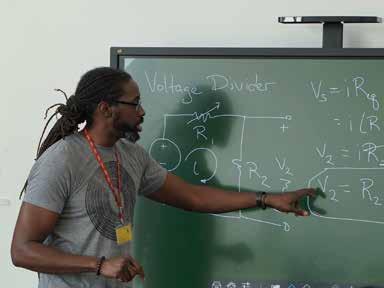
important skill of identifying when something is going wrong, why it is going wrong. While the work certainly challenged the students, they also had a good time. “Working with Dr. Kyle was a very interesting experience,” says Raji R. ‘22, who had no previous experience in micro-controller electronics. “He was a very cool guy and an awesome teacher.” Eli K. ‘22 also described Dr. Kyle warmly. “He will help you with anything from the smallest circuit to the most complicated equations with the same enthusiasm and attention.”

Bianca T. ‘19 came into Dr. Kyle’s classes with more exposure to electrical engineering through prior TAS robotics classes and electrical engineering summer programs for college credit. She says that taking the course with Dr. Kyle, “taught me how to think about what I want my engineering projects to accomplish. Instead of just building up a circuit for the sake of completing the circuit, I could design a circuit that did something such as measure temperatures, sense muscle contractions, or chest expansions during breathing.”
The admiration definitely flowed both ways for Dr. Kyle. “The students here have been fantastic. I’m blown away by how respectful, interested, engaged, and focused the students are...even first-year students without the level of technical experience have been willing to take on these complicated challenges. They keep at it which is exciting for me as an educator.” He chose to visit TAS as the Joanna Nichols Visiting Scholar because “this seemed like a once-in-a-lifetime chance and I should jump on it. It has been an honor to be a part of this, and I am very happy to be here.”
Beyond the classroom, during a three-lecture series, “Bioelectricity: History and Applications,” Dr. Kyle shared information about how human bodies are generators and users of electrical energy. From the electrical powerhouses that are our brains through the tiny stapedius muscles in our ears, bioelectricity plays a critical role in the regulation of our bodies, transmission of information, and regeneration after injury. In this series of talks, he shared the history of bioelectric phenomenon; measurement of bioelectric activity with an emphasis on the electrical activity of the heart; and the role of bioelectricity in wound healing.
Dr. Kyle expressed the importance of a design mindset in any specialization – whether you are a dancer or a mathematician – during lunch assemblies for the Upper School. “Just having an appreciation for it even if you don’t go into sciences and mathematics, having a baseline of technological literacy, is important and should be maintained and fostered.” He believes that when you recognize and define a problem you can then work to understand the needs of actual people and develop solutions. He advised students to stay flexible in their thinking and use creativity as a pathway to develop innovative concepts. Failure is part of the process, and “getting stuck is not a roadblock but a detour.”
His parting advice to TAS students is, “Whatever spark you have now, don’t let anything take that away from you. Wherever that passion lies, let that be your bedrock.” With all of his impressive professional accomplishments, Dr. Kyle is most proud of having an impact on how former students think and getting

them to flex their intellectual muscles. When reflecting on TAS he said, “The thing that I think is really special about this place is that you’ve got these great facilities in support of great students. I suspect that the people here would be doing great stuff wherever they went to school, but the fact that there is so much capacity here to do these sorts of things, not even just the engineering...that is a testament to a different caliber and quality of students.”
Dr. Kyle’s stay at TAS represents the eighth installment of the Joanna Nichols Visiting Scholar program, which is the result of the continuing, extraordinary generosity and vision of former TAS parent Mr. Kenny Cheng. The program brings relevant, distinguished, and stimulating figures such as Dr. Kyle to TAS each year to share singular insights and experiences with students. Past Visiting Scholars include:
• Dr. Jacob Soll, Professor of History and Accounting at the University of Southern California;
• Dr. Nancy Steinhardt, Department Chair and Professor of East Asian Art at the University of Pennsylvania;
• Dr. Michael Littman, Professor of Mechanical and Aerospace Engineering at Princeton University;
• Dr. David Spergel, Professor of Astrophysical Sciences at Princeton University;
• Dr. Benjamin Elman, Professor of East Asian Studies Department at Princeton University;
• Dr. Arthur Benjamin, Professor of Mathematics at Harvey Mudd University; and

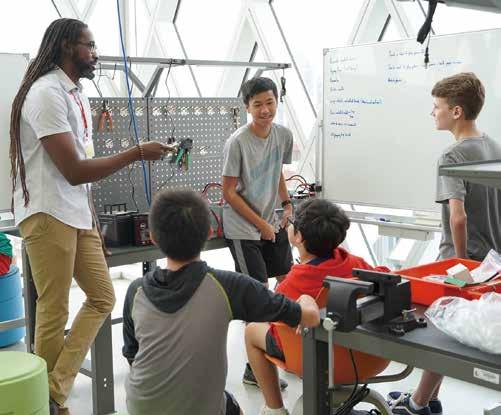
• Mike Chinoy, Senior Fellow of the USC U.S.-China Institute.
2019 年在嶄新的 Solomon Wong 科技館揭幕及開放期間,Joanna Nichols 訪問學者 Aaron Kyle 博士,於 1 月 份在 TAS 度過了一個月。Kyle 博士是現已發展成為生物儀器、生物力學和組織工程先驅的哥倫比亞大學生物醫 學工程系的資深講師。Kyle 博士因其對哥倫比亞學生智力發展的持久影響,而被授予哥倫比亞大學大學部和研 究所的傑出教學校長獎。 Kyle 博士的重點從一開始就很清楚。「自從小學三年級起,我就知道自己想成為一名工程師。我對電力的成長 著迷,隨著年齡的增長,我學到更多關於生物概念與工程學,特別是生物電學的融合。」他在 Kettering 大學追 求大學教育,在普渡大學讀研究所,他的研究專注於血管內導管的引導系統。在普渡大學,Kyle 博士比預期的 有更多教學機會,他意識到“我喜歡在教室和學生一起上課”並建立實驗室。 他的博士後研究之後,他在印第安納州印第安納波利斯的血管生物學和醫學中心工作,此職務導致他後來在哥倫
的。這是我非常喜歡的一部分。」
他的課程成為一項更大計劃,融合了擴展的科學部門,並包含更高級的工程學生,允許他們親自動手並發展出識 別錯誤,及為什麼會出錯的重要技能。雖然這項工作肯定會挑戰學生,但他們也玩得很開心。「與 Kyle 博士一 起工作是一次非常有趣的經歷,」以前沒有微控電子學經驗的 Raji R.'22 說。「他是一個非常酷的人和一位很棒 的老師。」Eli K.'22 也熱情地描述了 Kyle 博士。「從最小的賽道到最複雜的賽車他都會以同樣的熱情和關注幫 助你。」 Bianca T.'19 進入 Kyle 博士的課程,與電氣工程有更多的接觸,並藉之前的 TAS 機器人課程和電氣工程暑期課
認識並定義問題時,你就可以著手了解實際人員的需求,並製定解決方案。他建議學生保持靈活思維,並將創造 力作為發展創新概念的途徑。失敗是這個過程的一部分,“陷入困境不是障礙,而是繞道而行”。 他對 TAS 學生的離別建議是,「無論你現在擁有什麼樣的火花,都不要讓任何事情把你引開。無論激情在哪裡, 都要成為你的基石。」憑藉他所有令人印象深刻的專業成就,Kyle 博士最為自豪的是,如何影響以前的學生的思
 By Laura H. ('22), The Blue & Gold staff reporter
By Laura H. ('22), The Blue & Gold staff reporter
A few weeks ago, I sat down with Loung Ung and discussed what it was like to work with Angelina Jolie on the Netflix original film, “First They Killed My Father.” The production was based on Ung’s own memoir and the ups and downs Ung had experienced throughout the writing process.
The elaborate process of writing Ung’s bestselling autobiography, “First They Killed My Father,” was a very personal and heart-wrenching journey. “The book was a very isolating experience,” she said. “The scene of all my family members dying, you know, it was hard for me to write about my father and my mother. I don’t know exactly what happened to them. I don’t know the exact date.”
As a writer, Ung explains how mentally taxing it was for her to be faced with the past memories she had. “What the eyes don’t see the mind makes up many scenarios, and so I had many many different scenes in my head of what might have happened to my family during the war and it was very upsetting for me,” she said.
When writing the memoir, Ung did not hesitate to put down on paper all the rawest moments of her life. “I chose the hardest one, I wanted people to know that it all exists in my head,” she said.
Crafting this memoir brought upon flashbacks and memories for Ung, and the hardest part for her to write about was her mother and sister. “It breaks my heart to contemplate: were they together? Did my mother see my sister first? Did my mother see my sister being dragged away?” she said.
Years after the book was published, Angelina Jolie decided to direct a film based on the memoir Ung wrote. Besides the film, which brought Ung and Jolie together, they also have a great friendship beyond work. “We have been friends for many years, and I’ve always known and trusted her as a woman, as a humanitarian, as a mother, as an activist, as a friend,” she said. Ung mentions how she and Jolie were friends before the film was created. “I know her well, I love her, and to have the opportunity to work with her as a filmmaker—that was new. I’ve never done that before.”
As the writer of “First They Killed My Father,” Ung felt obligated to express the unique Khmer culture and people. Ung also explains how glad she felt when Jolie wanted to make “First They Killed My Father” a Cambodian film. “I’m so proud that the film was made in Cambodia, with an all Cambodian cast in the Khmer language, with thousands of Cambodian actress, costume designers, makeup artists, hairdressers, and lighting person. I’m also proud of the fact that the Cambodians came together to do it, it was very painful for a lot of them. I was on the set where many Cambodians were crying and having memories—bad memories of losing their parents or grandparents—just like me,” she said. “But they came together, and they think this is important to do, and we were on it together, we came together.” Besides having an all-Cambodian cast, many of the actors actually survived through the war themselves, making this Cambodian “reunion” all the more special.
義者、一名母親、一名積極份子、一位友人,」她說。在電影創作之前,Ung 提到她和 Jolie 是如何成為 朋友的。「我很了解她,我愛她,並且有機會與她一起作為電影製作人 - 這是全新的體驗。我以前從未這 樣做過。」

作為“他們先殺了我父親”的作者,Loung 覺得有義務表達獨特的高棉文化和人民。Ung 還解釋了當 Jolie 想要製作一部柬埔寨電影“他們先殺了我父親”時她感到多麼高興。「我很自豪,這部電影是在柬 埔寨拍的,演員都是講高棉語的柬埔寨人,有數千名柬埔寨女演員、服裝設計師、化妝師、美髮師和燈光 操作員。」她說。 「我也為柬埔寨人聚集在一起做這件事而感到自豪,對很多人來說這是非常痛苦的。在片場有許多柬埔寨 人哭泣,並且回憶 - 失去父母或祖父母的壞記憶 - 就像我一樣,」她說。「但是他們一起攜手,他們認為 這麼做很重要,而且我們一起,一起攜手走過。」除了全是柬埔寨演員之外,許多演員實際上是戰爭的倖 存者,使這個柬埔寨人“重聚“的時刻更特別。「我感到非常自豪的是,柬埔寨人,與 Angelina Jolie 和 我這樣的作家,可以把這部電影製作出來,」她說。

“Someone might say, wouldn’t it be funny to make a play about laughing gas and elephants? It might be funny, but the piece would not have an objective,” American playwright Darren Canady said. Canady visited Taipei American School theater students from January 14-18, 2019 to teach the elements of scriptwriting.

Canady has won multiple awards, including the Lorraine Hansberry Playwriting Award, the Theodore Ward Prize for African-American Playwrights, and the M. Elizabeth Osborn New Play Award. His work examines America’s socio-political landscape today in relation to the historical narratives told from the perspectives of black communities of the midwestern United States.
Canady’s first theatrical performance was his role as Peter Rabbit in a kindergarten production, which encouraged him to continue acting by participating in annual Christmas and Easter Pageants at his church. But it was the storytelling culture of family gatherings and the accounts of his relatives that truly ignited his love of stories. “I wouldn’t be a playwright without my family background,” Canady said.
As an only child, Canady was shy and befriended his books. Acting became the cure for Canady’s social anxiety, as he dedicated his entire high school career to the performing arts. “By the time I reached college, I was open to change, sociable and unafraid to interact with people,” Canady said.
From there, he earned a creative writing degree at Carnegie Mellon University, then went to New York University, where he won the Kendeda Graduate Play Competition in his final year for his play “FALSE CREEDS.” The play follows a family working to repair their lives in the aftermath of the Tulsa Massacre of 1921. Tulsa, Oklahoma, otherwise known as “The Black Wall Street,” was home to a prosperous black community until a white mob ransacked, bombed, and set fire to the city. Despite the devastating loss that resulted in this atrocity, the event has been largely erased from American history. Canady was even concerned the public would question if the story was real. His grandmother, who had told him the tragic accounts of survivors as a boy, was gradually losing her memory to Alzheimer’s, prompting him to finish the play.
After being selected for the Kendeda Graduate Play uniting competition, he spent the summer at the Alliance Theater in Atlanta, Georgia honing the piece until its debut. “It was one of the best moments of my career, especially because it was my last piece my father saw before passing away,” Canady said. “It was a turning point for me, as up until this success I had doubts about pursuing playwriting. But that’s when I knew it was what I wanted to do.” And he did, continuing his work at The Julliard School in New York City.
He also continued to investigate the ways his racial and cultural roots are tied to the complex racial history of Kansas. For example, Brown v. Board of Education, the Supreme Court case that ended de jure racial segregation in schools, was first filed in Canady’s home city of Topeka. “I’m interested in the way geography affects lives, as the black communities of New York or the West Indies are different than the black communities of the Midwest. My family has a specific flavor, in comparison.” Canady said.
While Canady’s former instructor Marsha Norman taught him to write about what scared him the most, Canaday also draws inspiration from his passion and anger regarding political issues. “I wish there were more opportunities for performers of color, and LGBTQ people as well,” he said. In his work, Canady confronts black erasure from history and society’s evasion of racial issues. “I look for what kinds of history we hold onto,” he said. “I like to find stories that carry the pioneering spirit.”
Canady 的第一次戲劇表演是他在幼兒園劇作中扮演彼得兔的角色,鼓勵他繼續通過參加教會年度聖誕節和復活 節選美表演。但正是家庭聚會的講故事文化以及他親戚的敘述才真正點燃了他對故事的熱愛。「沒有我的家庭背 景,我不會是劇作家,」Canady 說。 作為一個獨生子,Canady 是害羞的,並與他的書籍為友。表演成為 Canady 社交焦慮的治療方法,因為他將整 個高中生涯奉獻給了表演藝術。「當我上大學時,我願意改變,善於交際,並且不怕與人交往,」Canady 說。 從那裡,他在卡內基梅隆大學獲得了創意寫作學位,然後去了紐約大學,在那裡他於最後一年,以他的戲劇


 By Brenda Lin, PTA Communicatons Officer
Dr. Colleen Richardson
By Brenda Lin, PTA Communicatons Officer
Dr. Colleen Richardson

Sponsored by the PTA’s Special Grants Program, TAS hosted Dr. Colleen Richardson for two weeks last December. Dr. Richardson directs the Wind Ensemble at Western University in London, Ontario, the second largest music program in Canada. During her time at TAS, she worked with middle and upper school music students and spoke at a parent coffee, where she discussed the lifelong benefits of music education. She stressed, “Research has shown that the arts and music don’t take away from academic success, but enhances it, making students ready to learn.” This eagerness to learn is a quality Dr. Richardson found across the student body at TAS. She observed students who are exceptionally driven and set high standards for themselves, which is all the more reason why music and the arts help students find balance. Dr. Richardson explained, “The physical, emotional, and social engagement of the performing arts allows them to cope with the process and understand and experience that it is the process that matters, and not the product.”
Dr. Richardson shared that during the upper school wind ensemble concert, there had been a few mishaps, but in the review of their performance, TAS students didn’t harp on their mistakes. Instead, they made note of them and quickly moved on and spent the bulk of their time celebrating each other and expressing gratitude for their partnership. This sense of mutual trust and camaraderie is developed over time spent practicing and rehearsing together and it is proof that music education and a focus on the creative and collaborative process makes these students happier, healthier, and more resilient human beings. Sydney H. (‘22) put it beautifully: “Dr. Richardson was extremely enthusiastic, which encouraged every member of the band to be as passionate about music as she is. She made us think about our music in a different way than we had before: it was not just rhythms and notes, it was art.”

Yet another PTA grant visitor who encouraged TAS students to explore a more balanced and whole sense of self through the performing arts was Vincent Thomas. Mr. Thomas is a dancer, choreographer, and teacher who intersects dance, music, and text to create a deeper social, physical, and emotional awareness. During his residency on campus this January, Mr. Thomas worked with upper school dancers on one of his pieces, titled, “What’s Going On?” The community was treated to a free performance of this unique work that blended spoken word, projected imagery, dance, and social commentary.

Mr. Thomas also led a movement workshop for parents. He reminded parents most of whom don’t have many opportunities to dance anymore that if you know how to move in your body, then you can move within a space, and by extension, within this world. Through simple stretches, dance moves (Mr. Thomas had a roomful of parents doing the Electric Slide at 8 AM), and a mindful listening exercise with a partner, parents were able to inhabit their bodies and connect with one another in a joyful and sincere way. One parent gushed, “We should always begin our days with dance!”
In February, world-renowned architect Kris Yao visited TAS as the PTA’s wellness speaker. Mr. Yao’s works include the Lanyang Museum, the Water-Moon Monastery, and the Southern Branch of the National Palace Museum, just to name a few. His architecture is infused with spirituality and addresses the core of the human condition. As a former TAS parent with three alumni children, his talk, titled “Distractions and Serenity,” focused on parenting and meditation and was enthusiastically received by the parent community.

Much like his architecture, which is not only about functionality, but about finding the balance between introspection and outward expression, Mr. Yao shared his philosophy on living well and raising children who are independent and confident. He encouraged parents to begin a regular practice of meditation with their children, as it teaches them how to be “alone, but not lonely,” so that children will find their own way and parents can manage the “long process of letting go.”
Mr. Yao reminded parents that the traditional markers of success such as academic achievement and a high-paying job _ are superficial and “easy” to achieve, as opposed to the more difficult and more worthwhile work of knowing one’s self. He stressed the value of exploring “useless” pursuits _ passions and interests that help balance a child’s world view, while ensuring a sense of well-being.
There is overwhelming evidence that academic excellence and wellness are not mutually exclusive and that in fact, tending to physical, social, and emotional needs only bolsters one’s academic resilience. Whether through music, dance, or meditation, there are a myriad of ways to find a healthy balance between rigor and creativity, structure and freedom.
TAS 學生並沒有對他們的錯誤表示不滿。相反地,他們記住錯誤,迅速繼續前進,並花費大量時間互相慶祝 及表達他們對伙伴關係的感激之情。這種相互信任和友情的感覺是隨著時間的推移而發展起來的,並且一 起練習與排練,這證明音樂教育和對創造性與協作過程的關注,使這些學生更快樂、更健康、更有彈性。
Sydney H. (‘22) 說得好:「Richardson 博士非常熱情,鼓勵樂團每個成員都像她一樣對音樂充滿熱情。

她讓我們以與以往不同的方式思考我們的音樂:不只是節奏和音符,而是藝術。」
另一位 PTA 資助的訪客是 Vincent Thomas,他鼓勵 TAS 學生通過表演藝術探索更平衡和整體自我意識。 Thomas 先生是一位舞蹈家、編舞者和教師,他將舞蹈、音樂和文本穿插一起,以創造更深層的社交、體 能和情感意識。今年 1 月,Thomas 先生駐校園期間與高中舞者就他的作品“What’s Going On?”攜手 合作。本社群被招待免費欣賞這個獨特作品,此作品融合了口頭語言、投影圖像、舞蹈和社會評論。
Thomas 先生還帶領一個家長律動研討會。他提醒家長們 - 他們中的大多數人沒有太多跳舞的機會 - 如果 您知道如何在身體裡律動,那麼您可以在一個空間內律動,並且在這個世界中律動。通過簡單的伸展、舞 蹈動作(Thomas 先生有一屋子的家長在早上 8 點踩著無限動力舞步!)、以及與同伴進行了一次有意識
Two Taipei American School teachers were recently selected to present at the 17th annual East Asia Regional Council of Schools (EARCOS) Teachers' Conference, held at the International School of Bangkok, Thailand from March 21-23, 2019. The theme from this year's conference is "Future Movers and Makers" and both TAS presenters, Joel Jayamohan and Tom Pasquini, took this theme to heart while crafting their workshop presentations. Both presenters are middle school educators; Jayamohan currently serves as the Middle School Art + Innovation Department Chair, while Pasquini serves as the Middle School Technology and Coach. The two represented Taipei American School as two of 52 teachers from EARCOS member schools chosen to present at the conference.
Jayamohan first found out about the opportunity to present at the EARCOS Teachers' Conference in an email from Peter Kimball, Professional Development Coordinator for the school. He says that he was motivated to apply because of the theme of the conference, Future Movers and Makers. "I believe that is what we are trying to do in the Art + Innovation department," Jayamohan said. Although this will be Jayamohan's first presentation at EARCOS, he has presented workshops at several conferences, including Taipei American School's internal In-house Institute, held annually in the spring, and in both of the other schools in which he was employed, the American International School Chennai (India) and Graded School (Brazil).
Jayamohan's presentation is titled "From Idea to Art: 3D printing and scanning in the classroom." His workshop is for educators who want to discover new possibilities in 3D design and 3D printing in the production of art and design. He hoped that his participants will leave with new project ideas, tools and examples of student work. Jayamohan is excited to share his knowledge with other teachers in our region because many schools are including new fabrication tools like 3D printers, scanners, and laser cutters in their curriculum. According to Jayamohan, we are now at a point in schools where we are "past the initial sense of wonderment" when we look at these tools. While schools in our region are investing in the tools, Jayamohan thinks that educators need more training on how to incorporate it effectively into existing multi-disciplinary curriculum. As technology continues to advance steadily every year, he hopes to help other educators to see these items as more than tools but as vehicles for art. Students in his class will learn to "think like a designer," not just to use the constantly evolving software and hardware tools.
Pasquini's presentation is titled "New Media Arts: Introducing Programming Through the Visual Arts." His workshop blends computer programming with art because, according to him, computer code is an exciting visual arts medium that is easily accessible to introductory programming students. He hopes that participants will leave his workshop with their own digital work of art, inspired by artists such as Mondrian, Seurat, and Warhol: "You'll learn how to code and you'll learn how to art," Pasquini said.
Although Pasquini expected a broad range of learners in his workshop (ranging from art teachers with little to no programming experience to computer science teachers who have been coding for decades), he crafted the workshop to offer something to everyone who attends. Ultimately, he wanted attendees to "understand what it looks like for students to work in this medium and why it's cool to try out," said Pasquini. "I want them to think about changing their instructional traditions" and to "retain a sense playfulness" when teaching beginning programming students. Pasquini believes that this approach, teaching students how to program through visual arts, is better than the more traditional approach to programming because students can experience the joy of coding in a context that allows for more freedom, flexibility, and, as Pasquini said, "Bob Ross's 'happy accidents.'" When coding something for art (instead of simply for the sake of coding), every coding choice, including errors, can bring beauty to the product. Pasquini believes strongly in the intersection of art and coding because, ultimately, those students will become "digitally capable adults" who are able to collaborate in virtual spaces and remix and rework existing ideas in aesthetically interesting ways.
Both Jayamohan and Pasquini say that the school helped them in various stages of their workshops. For Jayamohan, Taipei American School provided a "steady stream" of professional development
activities that inspired him to pursue more knowledge in his field and to eventually contribute back to the professional development of others. He is also grateful for this opportunity because the School helped to fund chosen workshop participants as they traveled to the destination and reflected on their craft. "A workshop like this offers an opportunity to organize various ideas that we practice and present it in a concise form," said Jayamohan. "This presentation allows me to look at my curriculum, organize my ideas and diversify because the inherent value of the ideas can sometimes get lost in the day to day teaching of a unit."

Pasquini agrees. For him, the value of presenting workshops like this comes from the chance to do new things: "I've had the opportunity to work at the intersection of art and technology in several different courses that I’ve designed, and I’ve been appreciative of all the support the art department has shown by opening shows like Art in the Dark to this type of work," said Pasquini. "This year, I’ve had the chance to create a new elective in the Middle School, and those students have been inspirational with their enthusiasm and creativity." In this workshop, he was able to share what he has learned from these students and these new courses with the broader East Asian teaching region.
The purpose of the EARCOS Teachers' Conference, held annually in East Asia, is to: 1. promote intercultural understanding and international friendship through the activities of member schools, 2. broaden the dimensions of education of all schools involved in the Council in the interest of a total program of education, 3. advance the professional growth and welfare of individuals belonging to the educational staff of member schools, 4. facilitate communication and cooperative action between and among all associated schools, and 5. cooperate with other organizations and individuals pursuing the same objectives as this council. The conference changes emphases every year; this year's "strand" includes physical education, visual arts, film, design technology, robotics, performing arts, and technology.






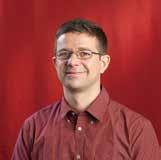

Pasquini 則擔任初中科技和教練。兩人將代表台北美國學校成為由 EARCOS 成員學校的 52 名教師中篩選而出的兩名演講者。 Jayamohan 首先是在本校專業發展協調員 Peter Kimball 的電子郵件中,發現了參加 EARCOS 教師會議的機會。 他說,由於會議的主題“未來的推動者和製造者”讓他有動力申請。「我相信這正是我們在藝術 + 創新部門所要 做的,」Jayamohan 說。雖然這將是 Jayamohan 在 EARCOS 的第一次演講,但他已經在多個會議上舉辦過研 討會,包括每年春季舉辦的台北美國學校內部研究所,以及他所受僱的其他兩所學校,美國國際學校

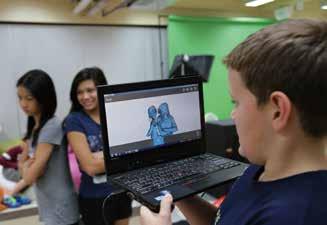
為產品帶來美感。 Pasquini 堅信藝術與編碼的交叉路口,因為最終,這些學生將成為“具有數位能力的成人”,

Anne Noordhoff Lin (’80) Reflects on A Family
By Connie Ma, Alumni and Community Outreach OfficerWhen Dr. M. Samuel Noordhoff passed away in December 2018 at the age of 91, he was mourned by the entire country of Taiwan. As a famed medical missionary who served in Taiwan for over 40 years, Dr. Noordhoff pioneered the field of craniofacial surgery in Taiwan, performing over 10,000 cleft lip and palate surgeries himself, and founded the Noordhoff Craniofacial Foundation in 1989. To Anne Noordhoff Lin (’80) and her three siblings, however, he was simply Dad.

Dr. M. Samuel and Lucy Noordhoff came to Taiwan in 1959 on the slow boat at the invitation of Mackay Memorial Hospital. Dr. Noordhoff became best known by his Chinese name in Taiwan, Luo Huei-fu ( 羅慧夫 ), which means “wise man.” “At that time, MacKay was this little red brick hospital, and Zhongshan North Road was a two-way gravel road – it wasn’t even paved,” Anne remarks wryly. Dr. Noordhoff served as the president of both Mackay Memorial Hospital and Chang Gung Memorial Hospital in Linkou. In his 40 years of service, he modernized medical treatment and care in Taiwan for people with cleft lips and palates, burn injuries, and those who needed intensive care. Dr. Noordhoff also had a hand in the training of Taiwanese doctors. “At Chang Gung, he insisted that his doctors train in the US with specialists in the fields they wanted to specialize in, on the condition that they had to return here and work here,” explains Anne. In 1989, he founded the Noordhoff Craniofacial Foundation (NCF) (https://www.nncf.org/en) with US$100,000 of his own funds. Today, the NCF works with Chang Gung Memorial Hospital to train doctors from different countries on Dr. Noordhoff’s methods of cleft lip and palate surgery.

The third of four siblings, Anne was born in Taiwan, and attended TAS from Grade 9 to Grade 12, graduating in 1980. “As a Third Culture Kid, you get good at making friends, saying goodbye to people. Things you aren’t so good at is basic stuff like how to write a check or how to drive a car!” remembers Anne. Looking back on her time in Taiwan, Anne loved her childhood here. “We lived in Zhuwei, which was like your typical suburban upbringing. You would go out and play after school, and your mom would yell for you when it was dinnertime. We would run around in the grass and go snake-hunting in the paddies.” Almost every year, the Noordhoffs took a week-long Christmas break to Kenting, leaving from Taipei at 3 AM to drive down the one-lane freeway that went all the way south, and arrive at 6 PM. Anne recalled staying at the US FASD hostel there and eating pancakes and burgers for a whole week.
After attending college at Seattle Pacific University, Anne became a teacher for special needs children and taught Grade 3 at TAS for several years. Anne notes, “My parents really instilled in us that we pursue our passions. So I’m not passionate about doing surgery, but I knew I wanted to teach.” In fact, in Anne’s graduating yearbook, she listed her goal: “To become a teacher of special people.”

In 1999, Dr. Noordhoff and his wife Lucy left Taiwan and retired. They continued to visit frequently until 2013, after he was diagnosed with Parkinson’s disease. In 2017, he received a Presidential Cultural Award from President Tsai Ing-Wen in recognition of his work. Dr. M. Samuel Noordhoff passed away on December 3, 2018 in Grand Rapids, MI.
In January 2019, Anne returned to Taiwan to celebrate her father’s life at the memorial service given by Chang Gung Memorial Hospital where Dr. Noordhoff worked for many years. There, she received a warm reception from the doctors and staff who had worked with her father. Anne is now on the board of the Noordhoff Craniofacial Foundation. “Our family wants to make sure that NCF continues because it does good work,” Anne explains. “I hope to be a dot-connector on the NCF board, to bring in the people that my family and I know to help the foundation.”
When Dr. Noordhoff said farewell to Taiwan, one gift from the doctors, staff, and friends who knew him best was a wooden sculpture of an oxcart laden with firewood, conveying the Chinese phrase Dr. Noordhoff often replied with that quote to those who praised him for his work: “We all do it together.”
Samuel Noordhoff 醫師於 2018 年 12 月去世,享年 91 歲,他被整個台灣哀悼著。作為在台灣服務超過 40 年的著名醫療傳教士,Noordhoff 博士在台灣開創了顱面外科領域,自己進行了超過 10,000 次唇齶裂 手術,並於 1989 年創立了 Noordhoff 顱面基金會。然而,對 Anne Noordhoff Lin'80 和她的三位手足,他 只是爸爸。 1959 年,馬偕紀念醫院邀請 Samuel Noordhoff 醫師及其夫人 Lucy 乘坐慢船來到台灣。
它甚至
- 的一家小紅磚醫院,」安妮苦笑道。羅慧夫醫師曾擔任馬偕紀念醫院和林口長庚紀念醫院院長。 在他 40 年的服務期間,他在台灣為患有唇裂和腭裂、燒燙傷以及需要加護病房的重症患者提供了現代化 的醫療和護理。羅慧夫醫師也參與了台灣醫生的培訓。「在長庚,他堅持要求他的醫生在美國與他們想要 專攻的領域之專家一起訓練,條件是他們必須回到這裡並在此工作,」安妮解釋道。1989 年,他以自己 的 10 萬美元資金成立了羅慧夫顱面基金會(NCF)(https://www.nncf.org/en)。今天,NCF 與長庚紀 念醫院合作,訓練來自不同國家的醫生學習羅慧夫醫師的唇齶裂手術方法。
MINNEAPOLIS — Honoring the nation's best, the National Scholastic Press Association has named 44 scholastic news sites as finalists in its prestigious Pacemaker competition.
While the judges have named the Pacemaker finalists, the Pacemaker winners have not been selected.
"The judging teams will now continue to study the sites named as Pacemaker finalists on a frequent basis," said Gary Lundgren, associate director and coordinator of the Pacemaker competition. "The Pacemaker winners will be selected shortly before they are named on April 27, so for the 44 schools we are naming as finalists today, the competition is really just heating up."
The NSPA Pacemaker award has a rich tradition and the association started presenting the award to high school newspapers a few years after the organization was founded in 1921. Throughout the years, yearbooks, magazines, online sites and broadcast programs were added to the competition.
"The Pacemaker is the association's preeminent award," said Laura Widmer, executive director. "NSPA is honored to recognize the best of the best."
The 44 Pacemaker finalists represent 13 states and Taiwan. California set the pace with 13 finalists.

To select the 44 Pacemaker finalists, judges carefully studied approximately 200 sites submitted from 34 states. The online sites competed in two different categories based on school population. Two teams of three judges studied every entry, analyzing its strengths. The status of each entry was agreed upon by at least two of the three judges.
In this competition, only the online news product was judged. The news sites were either digital companions to print newspapers and newsmagazines or online-only products.
A separate NSPA 2018 Newspaper/Newsmagazine Pacemaker competition recognized 67 print news publications in November. Several schools earned Pacemaker honors for both their print and online products.
Written comments from the judges about each of the Pacemaker-winning sites will be posted after the winners are announced along with overall comments and observations from all six judges. The professional bios of the judges will also be included.
Pacemaker finalists will be recognized with plaques at 7 p.m. on Thursday, April 25 at the Opening Ceremony of the Spring National High School Journalism Convention in Anaheim.
Pacemaker winners will be announced and will receive plaques on Saturday, April 27 at 3:30 p.m. and the convention's closing Awards Ceremony where both NSPA and JEA honors will be presented.

At the second Middle School Public Forum Debate Scrimmage, nearly 40 middle school student participants worked with upper school student volunteers who judged and provided feedback for the younger debaters. At this scrimmage, TAS also had a special guest, the 2017 NSDA National Public Forum Champion Cornelia Fraser. Cornelia watched and judged a demonstration round of top teams at the end of the scrimmage and provided feedback to the whole group.

The 2019 TAS iGEM team held an interactive bioethics roundtable discussion on March 12 focused on the recent controversy surrounding the first babies born with edited genomes. The scientist, He Jiankui, who created the two babies (Lulu and Nana) was also a former iGEM instructor for a team from Shenzhen.





The bioethics roundtable format consisted of small tables of six participants and moderators who discussed ethical questions pertaining to gene-edited embryos and treatment for specific diseases.
The AMIS (Association for Music in International Schools) High School Honor Band and Orchestra Festival took place in Salzburg, Austria in mid-February. Performing in Salzburg in the Mozarteum was a magical experience for both the students and the teachers. The Mozart House, commonly known as the Mozarteum, was built from 1910 to 1914 by Richard Berndl (1875-1955), the art nouveau architect from Munich. It was a spectacular hall to perform in, both visually and acoustically, and participants enjoyed cold but sunny weather every day.



Taipei American School successfully hosted the eighth Formosa Vex Championship in December. 36 teams representing eight different countries competed in the premier Vex tournament in the region. Teams from the TAS Upper School and Middle School had standout performances and obtained a number of important awards.


TAS's upper school team of seniors, Raid Zero G (4253G), formed an alliance with International School Manila's 3818 A team and went on to win the tournament in an emphatic fashion. Raid Zero G also won the prestigious Robot Skills Award and the Think Award because of their effective use of different autonomous programs during the competition.
TAS team Raid Zero J (4253J) won the Amaze Award as their robot was fast and able to shoot accurate throws at great speed, also earning the award for tournament runners-up. Team Raid Zero H (4253H), a team composed of freshmen, won the Innovate Award due to their impressive flipping mechanism. Middle school team 4813A impressively won the Design Award as their team followed a professional approach to their robot construction.
Two teams won their tickets to the World Championship next spring. Raid Zero G (4253G) will compete in the Upper School Division and Middle School A (4813A) will compete in the Middle School Division.



Upper school students competed for grade-level bragging rights in the ultimate class rivalry during Spirit Week from February 18-22. Daily themes and assemblies filled with friendly competition culminated on Friday, February 22 during Class Color Day, when faculty and administrators also joined in on the fun.
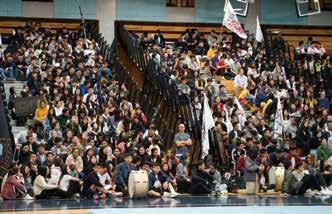
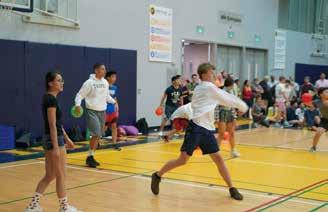
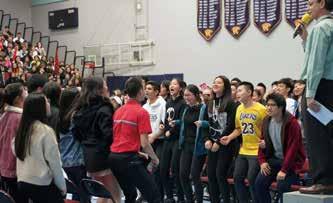



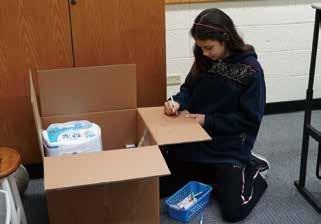

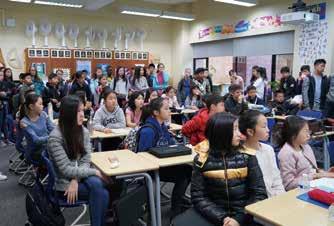
With guidance from Ms. Tarr and Ms. Pottorf, middle school students collected food items, toiletries, blankets, and gifts for local Taipei families in need for delivery before Chinese New Year. Each homeroom class acquired items for one family and selected student representatives who carefully led the collection, including learning how to pack and tape the boxes for delivery. This service project has an immense impact on the local families supported and allows the students a meaningful opportunity to serve their community.

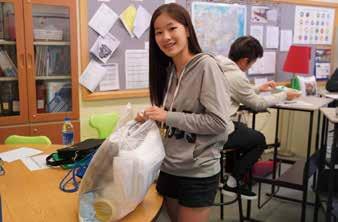
The upper school art department welcomed guest speaker Mrs. Ruthanne Tudball, an accomplished potter and art educator living in England, who provided demonstrations and spoke about her artwork from the last three decades. She graduated from Goldsmith’s College with a commendation and two years worth of research into soda glazing. This led to writing a book, “Soda Glazing,” published by A&C Black in 1995.
She has regularly conducted workshops around the world on throwing, manipulating, and assembling wet pots on the wheel as well as soda glazing. Her pots are in public and private collections in Europe, North America, Australia, and Asia.

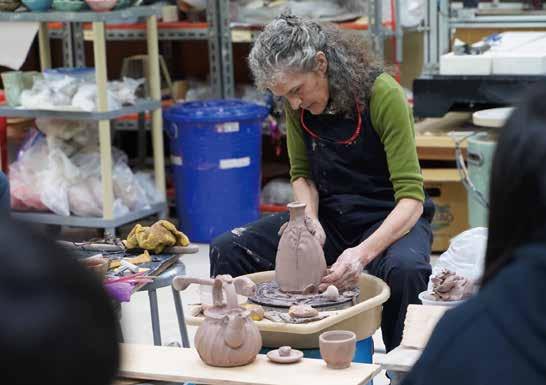
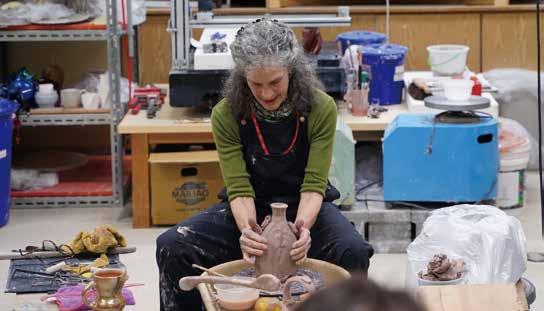
Mindfulness expert Dr. Craig Hassed, speaker at the 2017 TAS Wellness Convention, returned to campus for three days to work with parents, upper school students, and faculty from March 13-15, 2019. His parent presentation was held in the MPR on Wednesday, March 13.


In his discussions at TAS, Dr. Hassed shared how effectively engaging attention is a prerequisite for good mental, emotional, physical, and social health, as well as peak performance, making it an important life skill and critical to education. He also explored the science and philosophy of mindfulness with a particular focus on aspects relevant to education, such as memory, executive functioning, problem-solving, behavior, relationships, communication, and mental and physical health. He raised questions about some of the potentially negative impacts of excessive screen time, technology, and multitasking on attention, well-being, and learning.
Associate Professor Craig Hassed works at the Department of General Practice and is coordinator of mindfulness programs at Monash University in Melbourne, Australia. His teaching, research, and clinical interests include mindfulness-based stress management, mind-body medicine, meditation, health promotion, integrative medicine, and medical ethics. Craig is regularly invited to speak and run courses in Australia and overseas in health, educational, government, and corporate contexts and has collaborated with a number of national and international universities helping them to integrate similar content.
He was the founding president of Meditation Australia and is a regular media commentator. He writes regularly for medical journals and has published thirteen books. Craig is also featured in the documentary The Connection, and wrote the companion e-book, "The Mindfulness Manual." He and Richard Chambers also co-authored a free online Mindfulness course in collaboration with Monash University and FutureLearn. In 2019, Craig was awarded the Order of Australia Medal for services to Medicine.


Over the weekend of January 19-20, TAS hosted a WIDA workshop focusing on teacher collaboration to support multilingual students. Classroom and EAL educators from across Taiwan and other parts of Asia came together for this enriching professional development opportunity. WIDA ( World-class Instructional Design and Assessment) is a cooperative group whose purpose is to develop a comprehensive set of standards and assessments that promote equity for EAL students. This workshop focused on how to promote effective collaboration between classroom and EAL teachers in order to effectively support the unique needs of our students.
Using the WIDA standards, educators developed a shared understanding of how academic language develops. Teachers delved into this topic further and learned the key uses of language as well as discourse moves, which encourage academic conversations. Participants then explored and discussed how to best use WIDA’s resources such as their Speaking and Writing Interpretive Rubrics. Time was spent analyzing student writing based on these rubrics and discussing strengths already seen in the students’ work and what possible next steps could be to achieve
growth. On the last day, the participants investigated many different partner models for instruction and then were given time to plan for further collaboration within grade levels. Overall, participants walked away with a deeper knowledge of what WIDA is and what the organization can do to help educators answer questions such as,”How do I best support my students’ language growth?” and “What resources are out there for helping improve language development?”

On September 26, 2019, TAS will celebrate the 70th Anniversary of the first eight Taipei American School students meeting for class in the basement of the Presbyterian Theological Seminary. While much has changed over 70 years, the curriculum remains American-based and the students are still international; the first class included American, European, and Chinese children. More details will come soon in anticipation of this exciting milestone for the TAS community.

Congratulations to all upper school students and faculty who participated in this year's IASAS (Interscholastic Association of Southeast Asia Schools) Cultural Convention. The IASAS Cultural Convention took place over three days from February 28 through March 2, 2019. All participants audition or are selected to participate in IASAS Cultural Convention performances and these cultural teams include delegates from all IASAS schools.
All of the IASAS Music delegates performed with professionalism and incredible musicianship at the IASAS Music Cultural Convention hosted by Singapore American School. The students performed solos, chamber ensembles, and joined with their other IASAS music colleagues in the large ensembles for the Final Festival Concert. Taipei American School's three chamber groups from the Band, Strings, and Vocal areas were selected to perform in the IASAS Showcase recital on Friday night, a concert that highlighted the pinnacle of performances from the near 200 adjudications that had occurred during the convention.
The Debate and Forensics tournaments at Jakarta Intercultural School featured 18 TAS delegates and a strong showing with the competition. Award winners include: Andy X. '20 – Extemporaneous Speaking Silver Medalist; Kai Yuan M. '21 – Extemporaneous Speaking Finalist; April T. '19 – Extemporaneous Speaking Finalist; McKenzie E. '20 – Impromptu Speaking Finalist; and Darren F. '19 – 4th Place Debate Speaker.
The Art, Dance and Drama showcase events occurred at International School Bangkok. Five art delegates brought 25 artworks that were highly appreciated by the students and coaches at the convention. Vivian K. '21 was honored as a four-year IASAS delegate, and Annie B. '21, Guo C. '19, Joseph H. '19, Sarah S. '19, and Jasmin Y. '19 were featured in the traveling art show that is now on display in front of the Guy Lott, Jr. Auditorium.
The drama performance of "Godspell" was received with amazement at the skill, talent, and humility of the actors on stage. All participating students were singing, dancing, playing instruments, and acting at different times to tell this compelling story. The talented dance team performed "un//breakable," which uses glass as a metaphor to look at strength, fragility, and glass ceilings.
Fourteen Grade 8 students and three upper school chairs represented TAS as the delegation of France at the MY-MUNOFS conference this year. Held at the Overseas Family School in Singapore, the conference was a three-day event where students authored, presented, debated, and passed resolutions on a wide range of global issues.



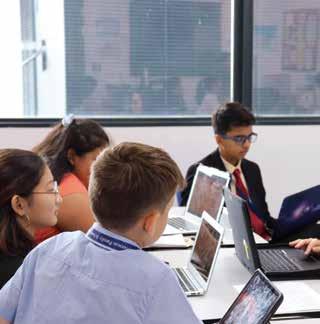

In committees such as Disarmament, the Security Council, and Sustainable Development, our delegates showcased the expertise they accumulated over the past few months. Not only did they excel in public speaking, debate, and writing, our delegates embodied the TAS values of responsibility, kindness, and courage as they actively approached, assisted, and formed positive relationships with delegates from other schools.
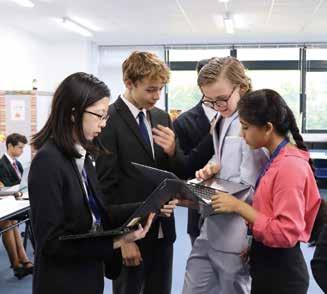

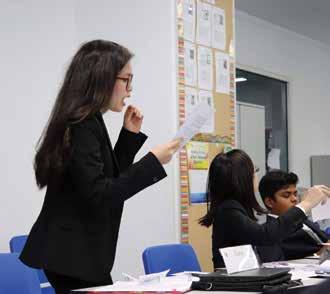
The TAS Physics Research Club participated in the Taiwan Young-Student Physicists' Tournament (TYPT) from March 15 - 18, 2019. The TAS teams competed against 22 teams selected from high schools all over Taiwan. The TAS teams brought back two silver medals for their efforts. The following students participated: Rem Y., Karen W., Claire W., Ryan C., Austin W., Jack B., Kelsey W., Ethan W., Richard W., and Jason W. Grade 12 students David W. and Alvin L., who represented Taiwan in last year's tournament, attended as coaches for the two teams.

In preparation for this event, the students from the Physics Research Club had to research and offer possible explanations to 12 problems that currently have no definitive solution. Their journey began in August 2018 when the problems were released. Over this time, they read countless scientific papers related to the phenomenon, hypothesized about the physics involved, designed and built experiments, collected data, derived theoretical mathematical models, and did computer modeling to help reconcile their data and theoretical models.
The students had to present and defend their research, critique others' research, and evaluate debates between other teams. In total, TAS students participated in 24 debates over three days and were judged over 120 times. After all was settled, both TAS teams earned
finished within three points (out of a possible 600 points) of a gold medal finish.
In addition, Jack B., Kelsey W., Karen W., and Rem Y. received individual awards for particularly strong performances. These students were among the only 10 students from the TYPT competition that were selected for Taiwan National team training.
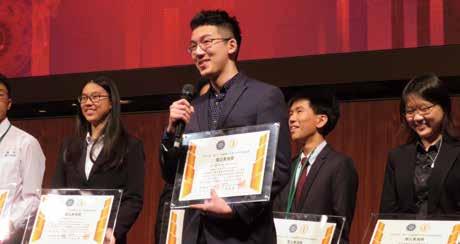

Scientific Research Article Accepted to ChemRxiv
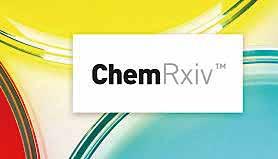
Congratulations to Jonathan (Jack) B. ('21) who has written a scientific research article that has been accepted to ChemRxiv: The Preprint Server for Chemistry. The title of Jack's research is "Facile synthesis of Formate-Functionalized Graphene Quantum Dots." In just one week since acceptance to ChemRxiv, Jack's paper has been viewed by the scientific community over 130 times and downloaded by 50.
Jack's research involves the synthesis of carbon particles called "quantum dots" that are on the order of one billionth of a meter in size. These dots will emit UV light when given energy that can be tuned by altering the size or function of the dot. In TAS's Sandy R. Puckett Memorial Research Laboratory, Jack successfully synthesized carbon quantum dots, in the form of graphene, and altered the quantum dot by adding a formate ester functional group on the edge of the quantum dot. This addition of the functional group resulted caused a change of UV light emittance and showed that he successfully tuned the quantum dot to a different, but specific, UV frequency.
On March 8 and 9, 2019, lower school students and parents enjoyed a time of creativity and collaboration on everything from paper rockets to 3D printing, catapults to electronics, and augmented reality to hand tools.




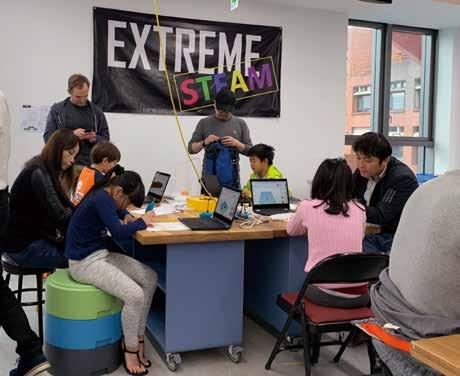
Extreme STEAM Family Day events for lower school families are a celebrative event where family members collaborate with each other while exploring science, technology, engineering, art, and mathematics challenges. Families attending the Extreme STEAM Family Day have multiple STEAM activities to explore and choose from. Each challenge is designed with new and experienced engineers and programmers in mind.
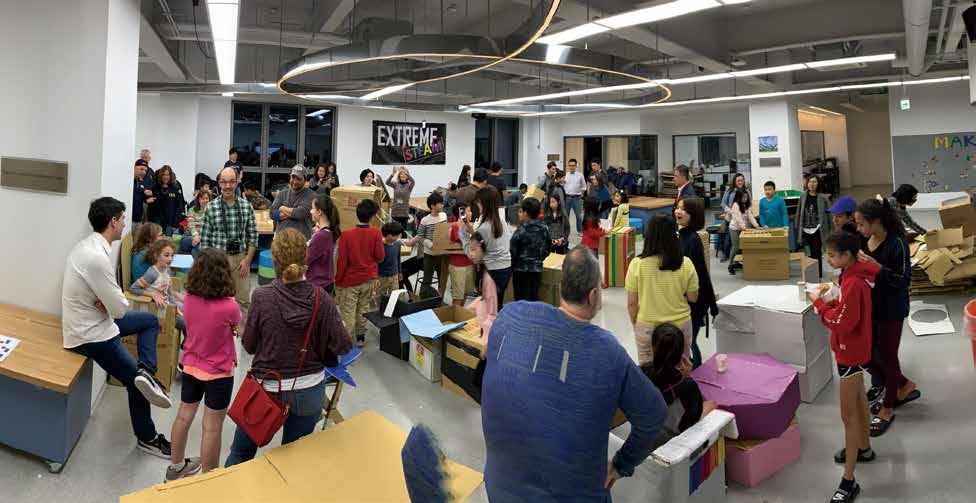

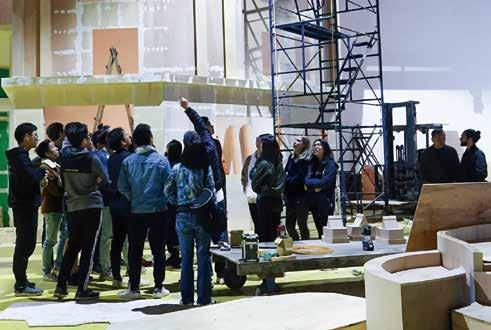

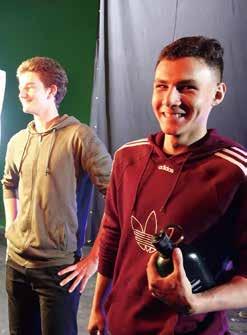


TAS film students went on an incredible field trip to Arrow Cinematic Studio in Linkou, one of the largest production studios in Taiwan, where films including "Life of Pi" (Ang Lee) and "Silence" (Martin Scorsese) used the facilities. Students were given a tour of the massive facilities and equipment rooms, and their lead Director of Photography also conducted a lighting workshop for the students.




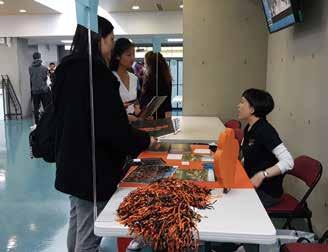



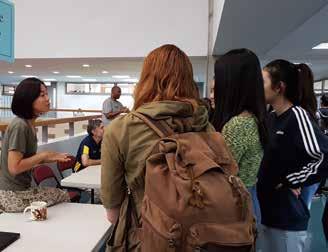

The College Counseling Office hosted the 9th Faculty College Fair on March 29 during which faculty members represented their undergraduate institution and answered questions from upper school students about college life. Discussions centered around topics such as academic experiences, extra-curricular activities, housing, social life, and the area around the school. This event prepared students for the CAT College Fair, where participants have opportunities to interact directly with college representatives, taking place in the fall.

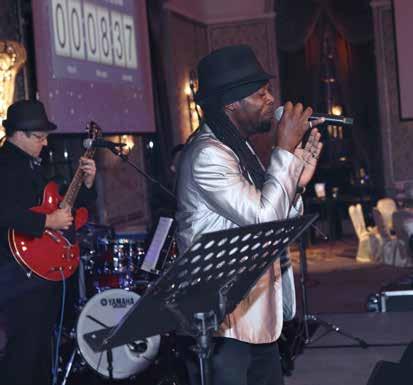
The 16th Annual TAS Gala Ball was held on March 2, 2019 at the Mandarin Oriental Hotel in Taipei. The champagne reception began at 6:00 PM and dinner began at 7:00 PM.



The TAS Gala Ball celebrates Taipei American School and its community of students, alumni, faculty, staff, parents, and friends. Complete with a fine dinner course, a live and silent auction, and dancing with live music, the TAS Gala Ball is one of the most highly anticipated fundraising events of the year.
This year's evening was made possible by the dedication of the following volunteers who invested much time and effort to make the Gala Ball a successful event. Thank you very much!


Jenny W. Chiu, Committee Chair
Linda Hong, Committee Co-chair
Candice Chen, Display and Inventory Coordinator
Anchi Chin, Auction Committee
Katie Hwang, Auction Committee
Wenchi Ko, Auction Committee

Carolina Ku, Auction Committee
Heidi Ku, Auction Committee
Casey Lin, Auction Committee
Leslie McFarlane, Program Writer
Vera Wu, Display and Inventory Committee
A special thank you to EVA Air, Show Chwan Memorial Hospital, Allen and Daphne Wang, and Henry Wang.

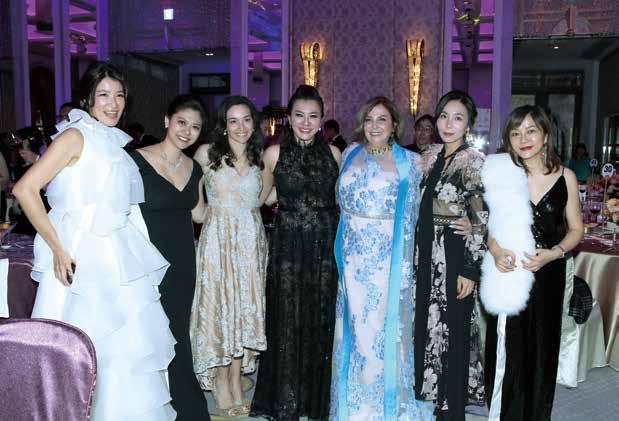



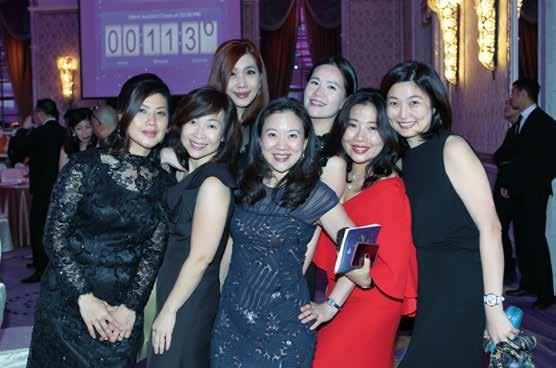


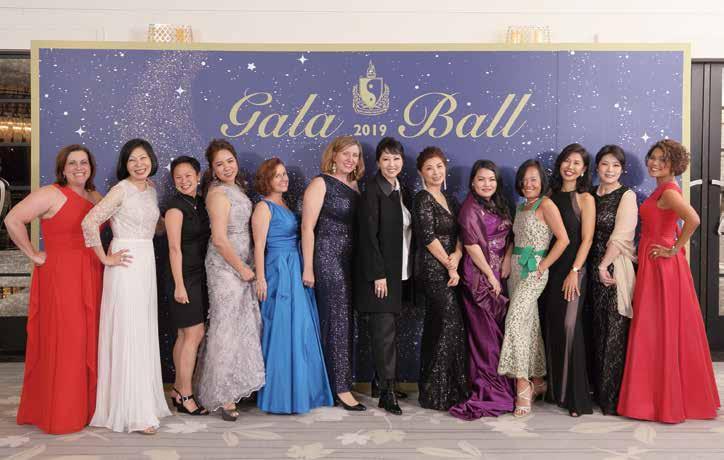



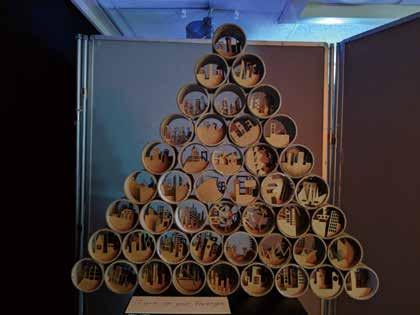
The second annual Art in the Dark Exhibit ran from Tuesday, January 22 to Friday, January 25 in the MPR. This event showcased artwork from both upper school and middle school faculty and students, including light sculptures, installations, and live performances.
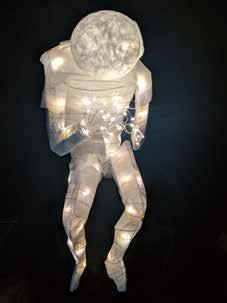


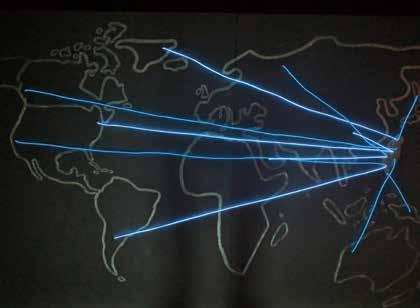
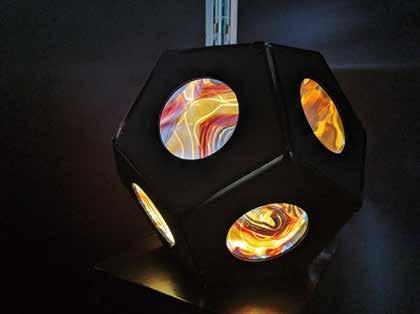
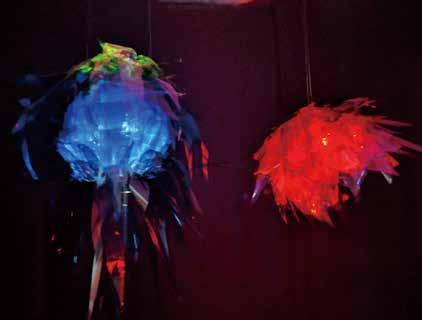



In addition to a rigorous academic program, and a focus on academic and personal excellence, TAS students will develop: *Adapted from the NAIS Essential Capacities
The Solomon Wong Tech Cube opened in January 2019, providing TAS students with the space needed to develop skills and experiences they need to make a real difference in the world. Upper school students will learn in an electrical engineering lab and design in a fabrication hub. The middle school floor houses a VEX arena and robotic design lab, as well as vast open areas for art and innovation. The floor dedicated to lower school students is designed to include “tinker and maker” spaces as well as an amphitheater.

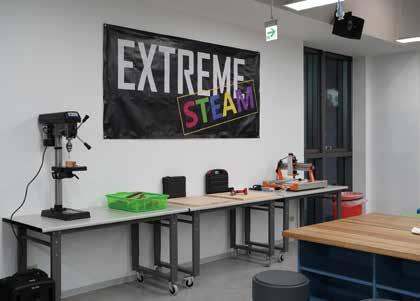

Current parents, alumni, and donors were invited to preview the new space from January 15-17, enjoying dinner and drinks in the incredible new facility to celebrate the beginning of a new era in Taipei American School's already successful robotics and design programs.



